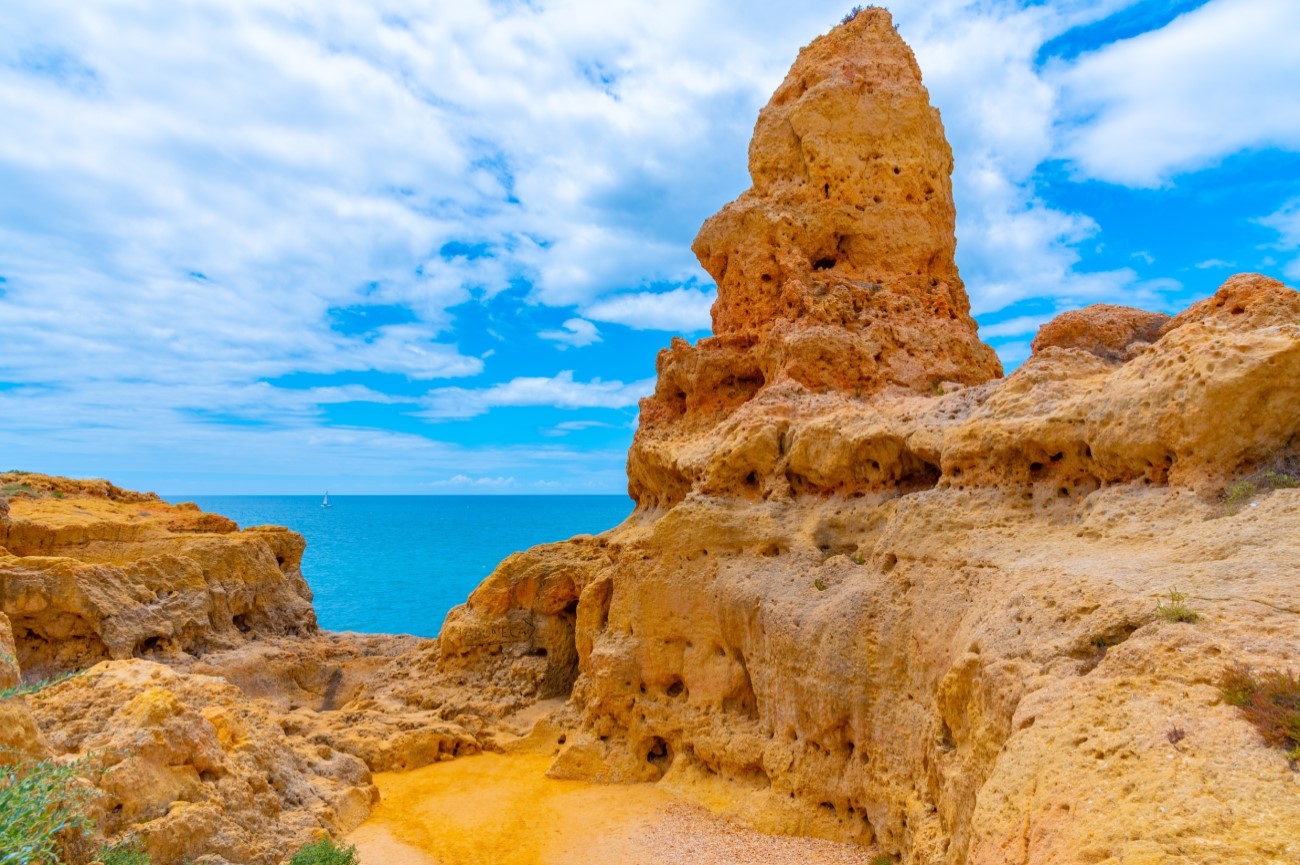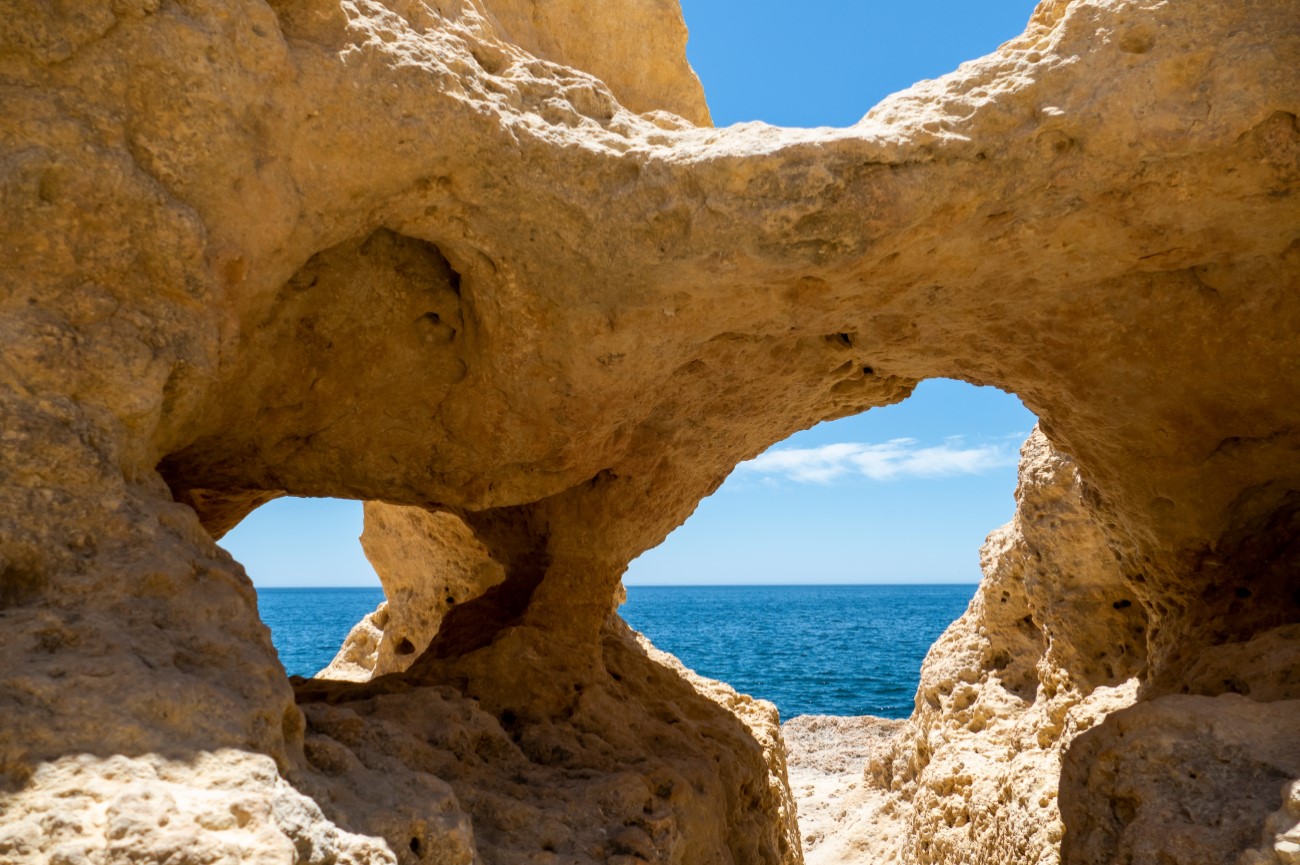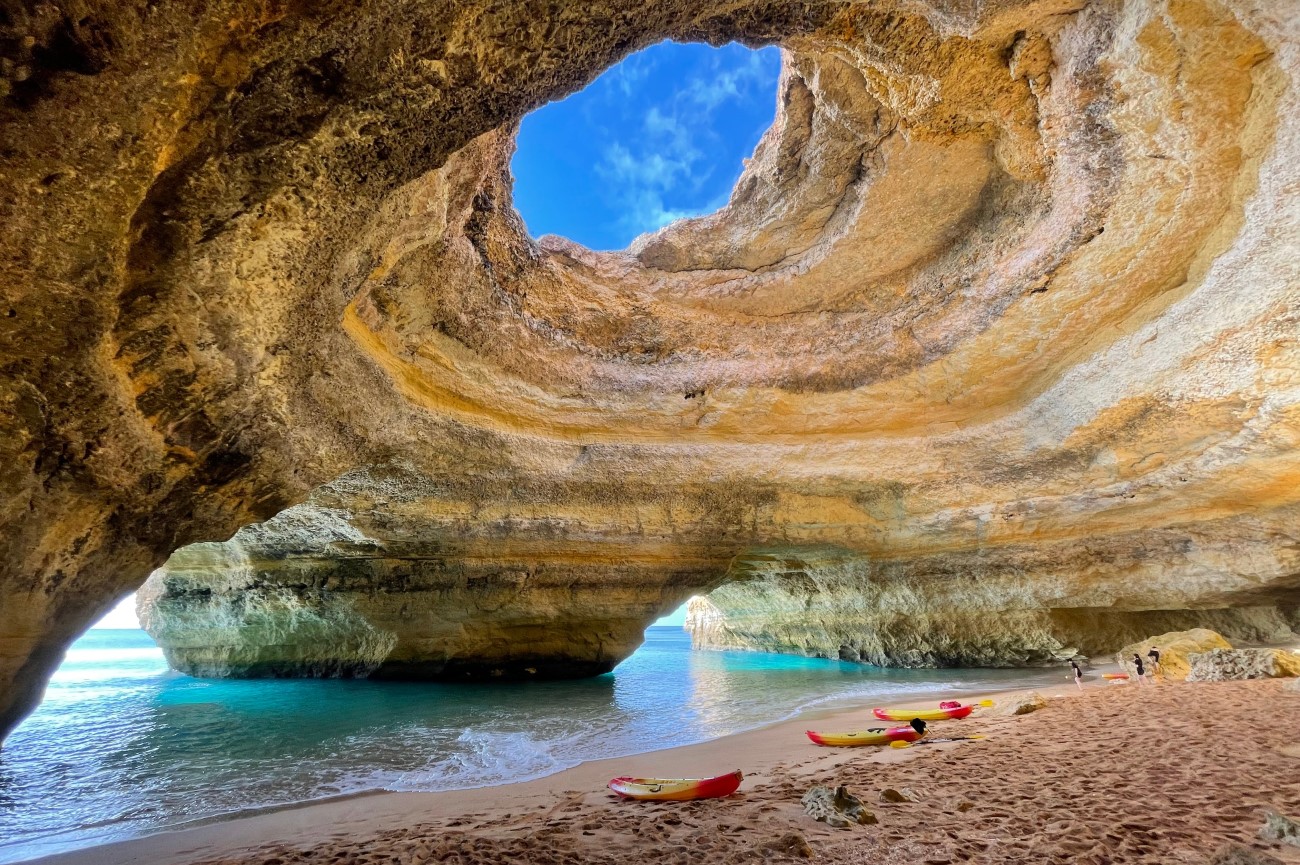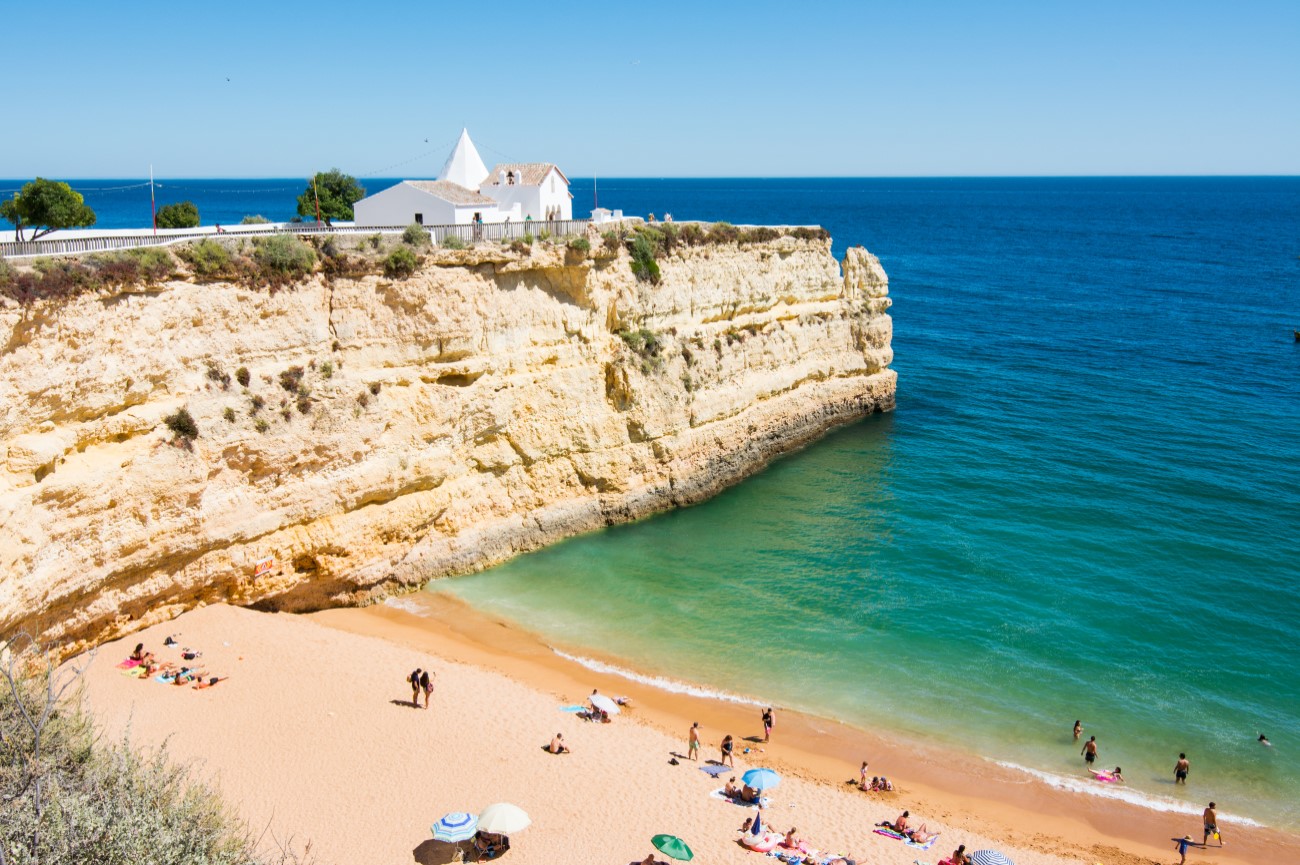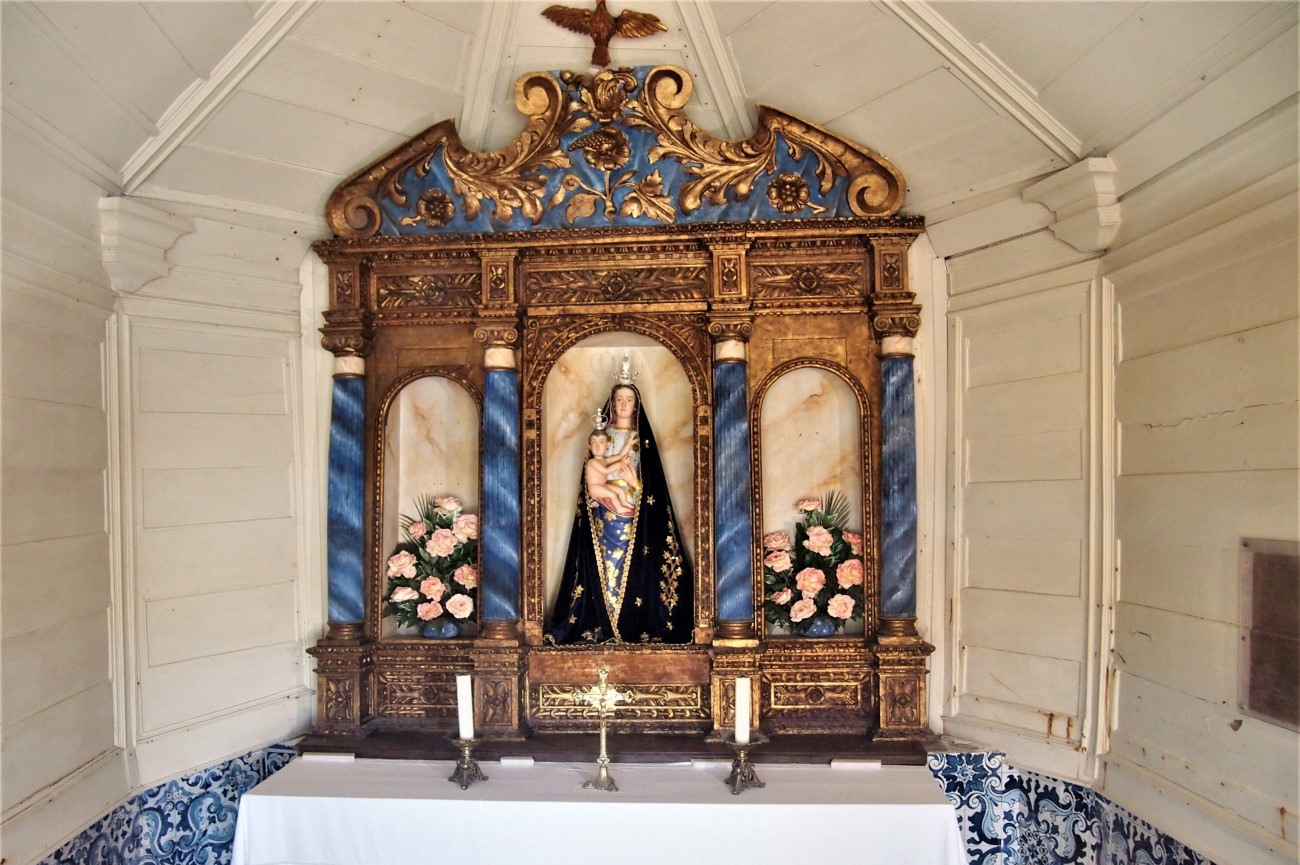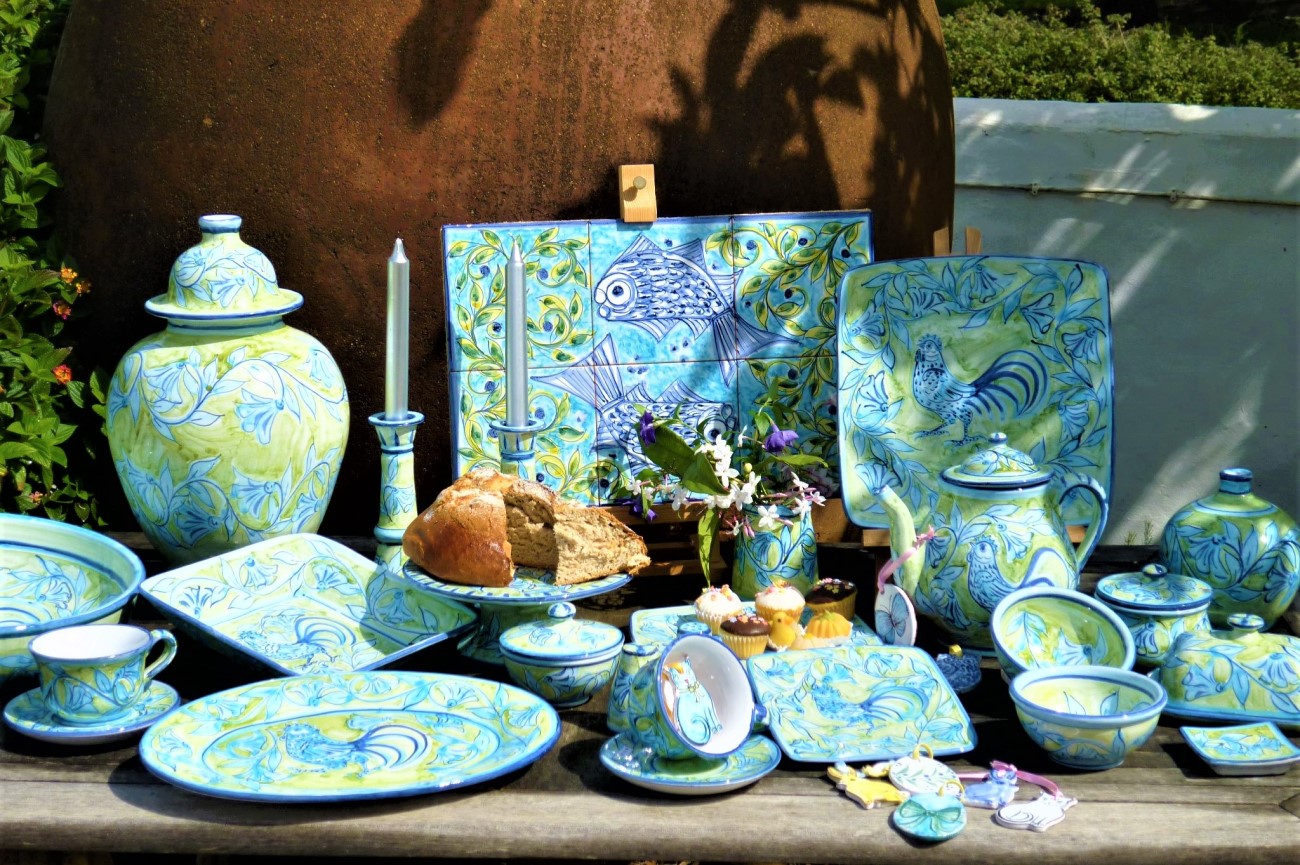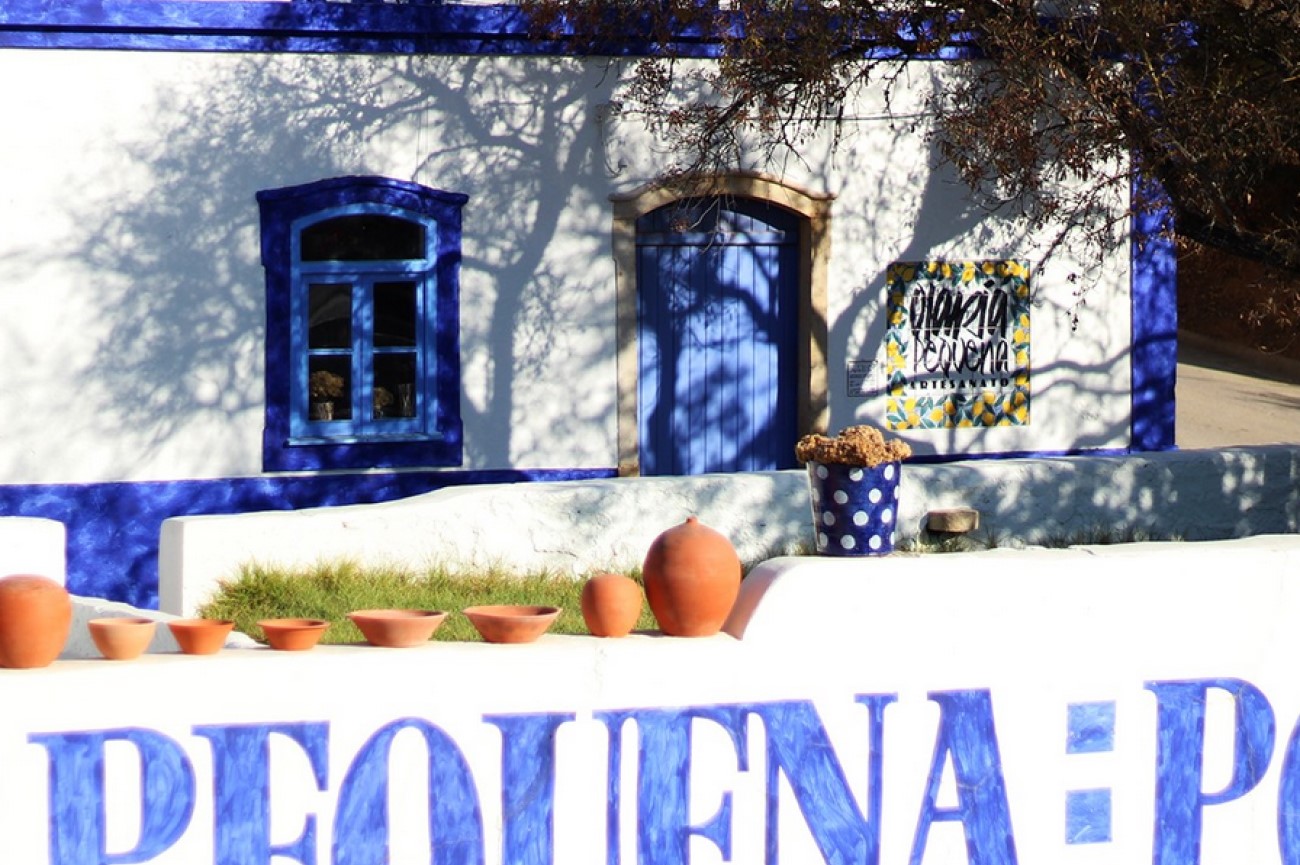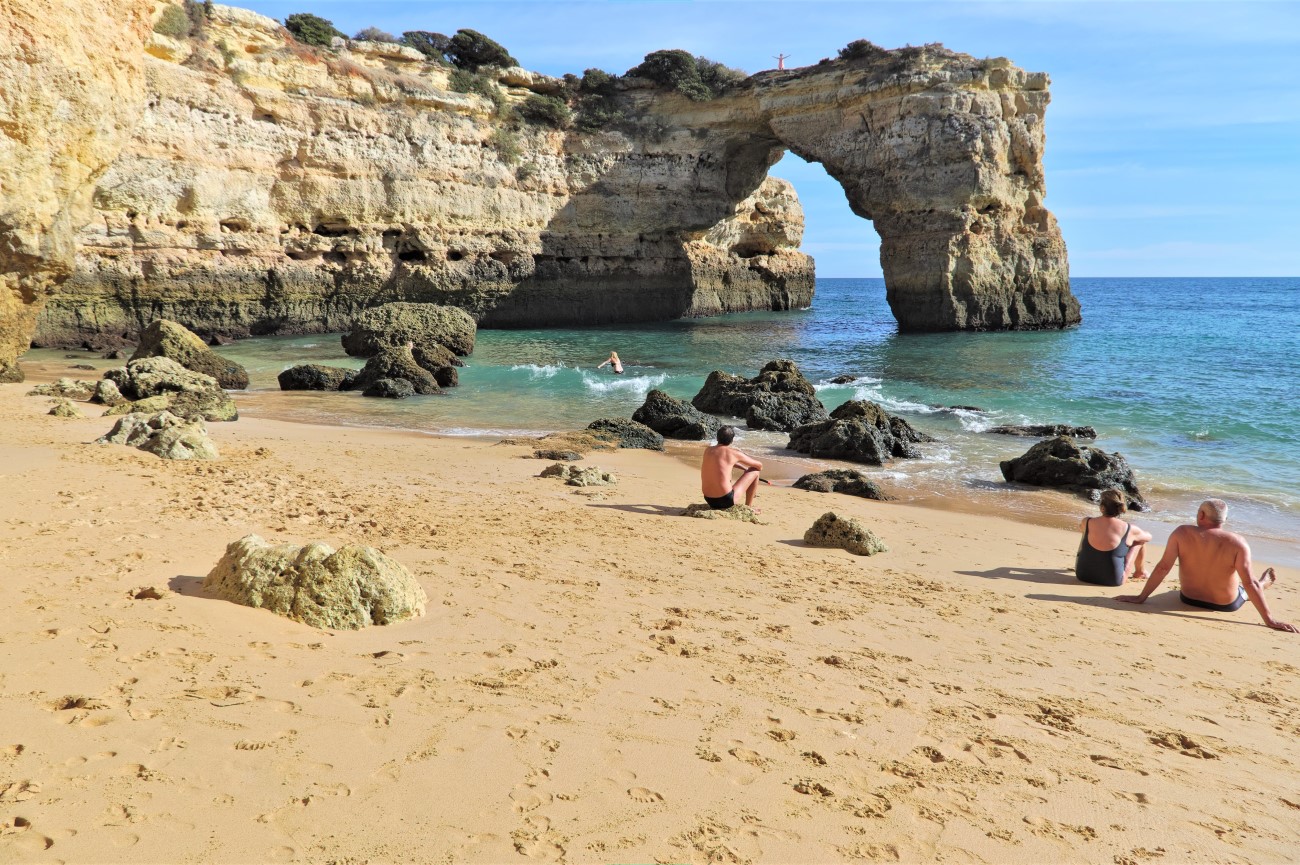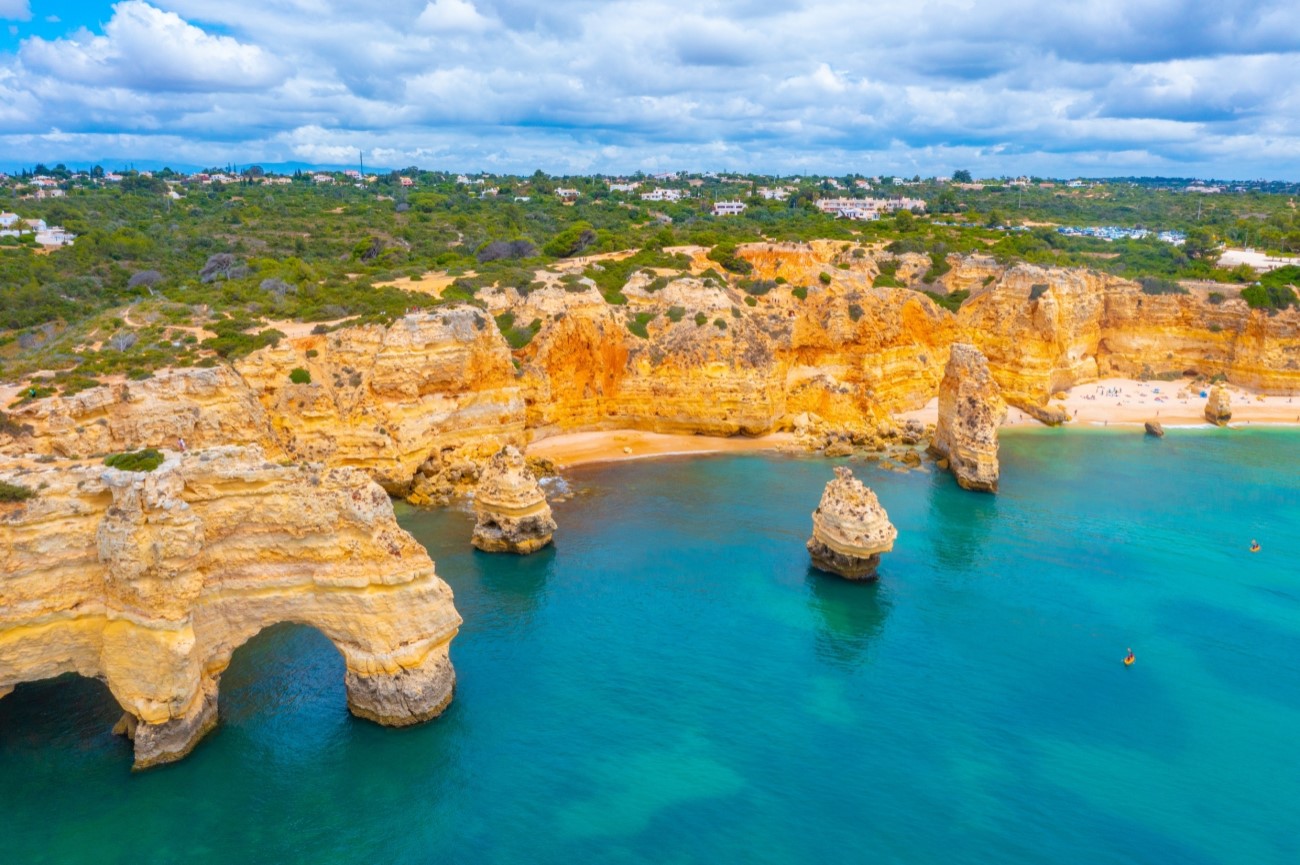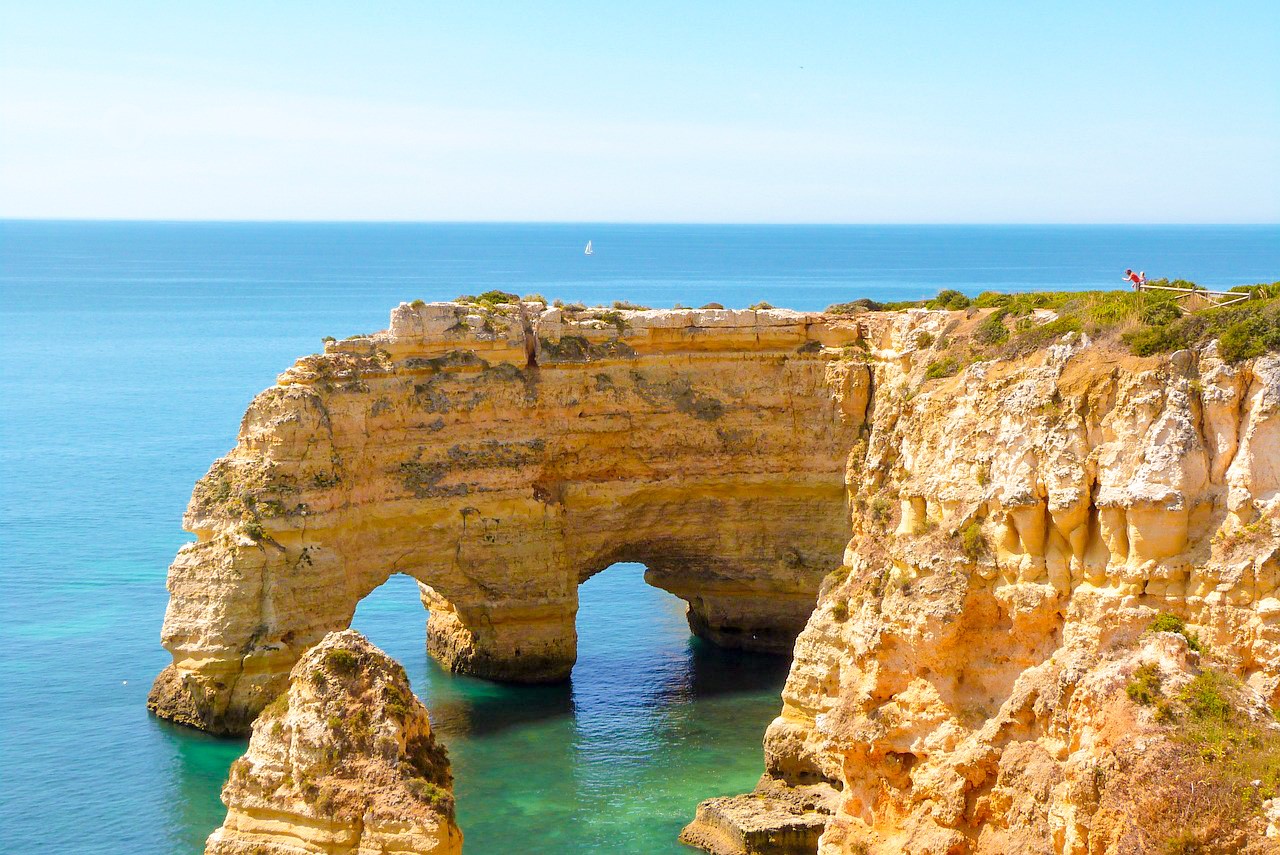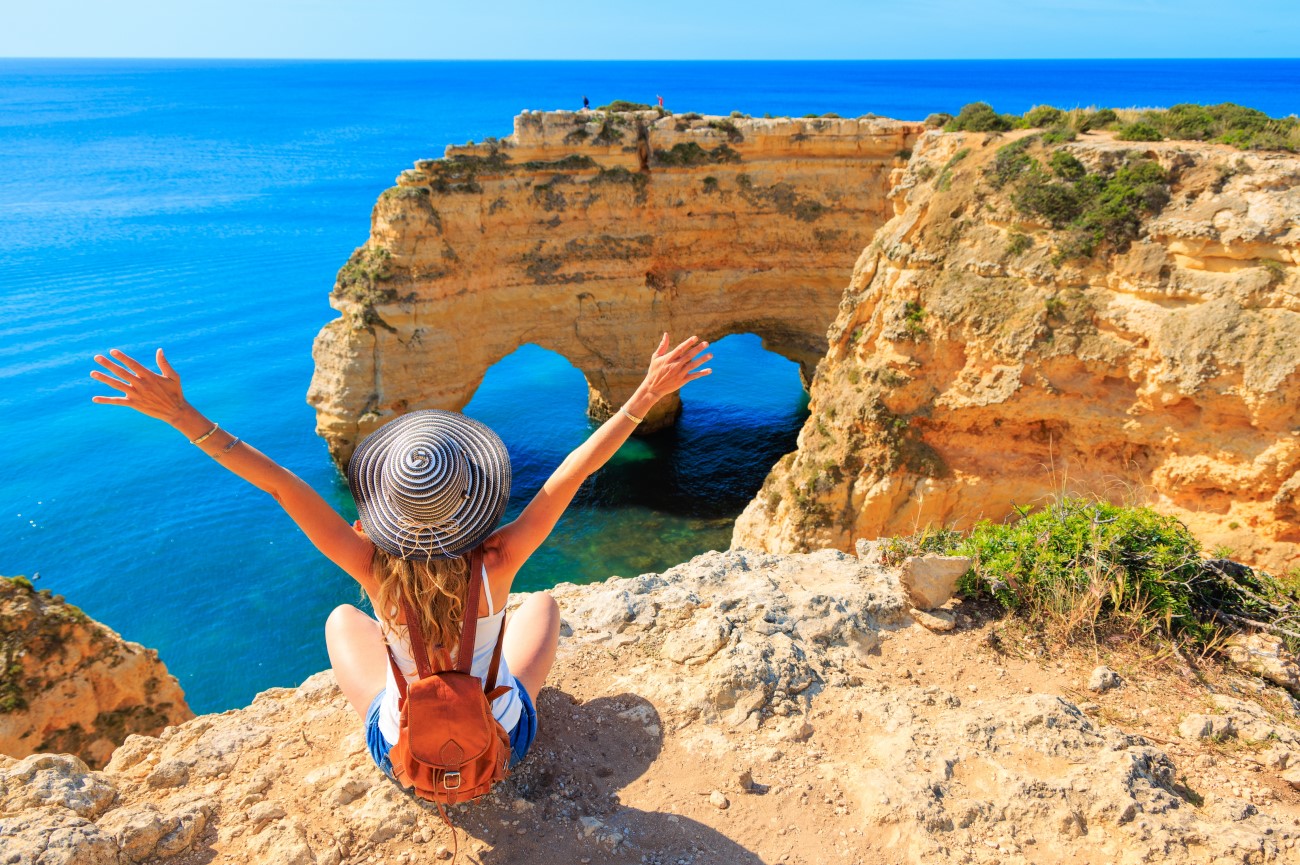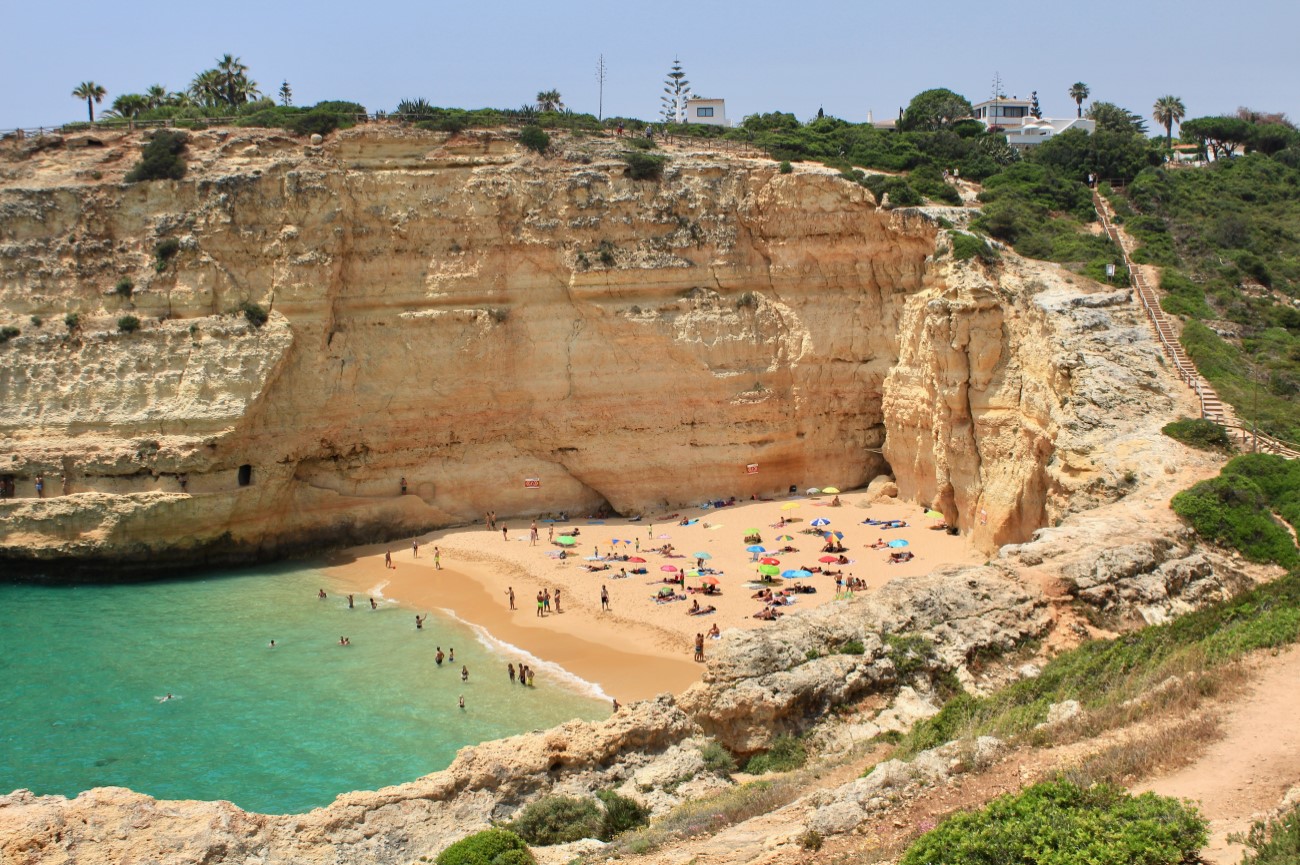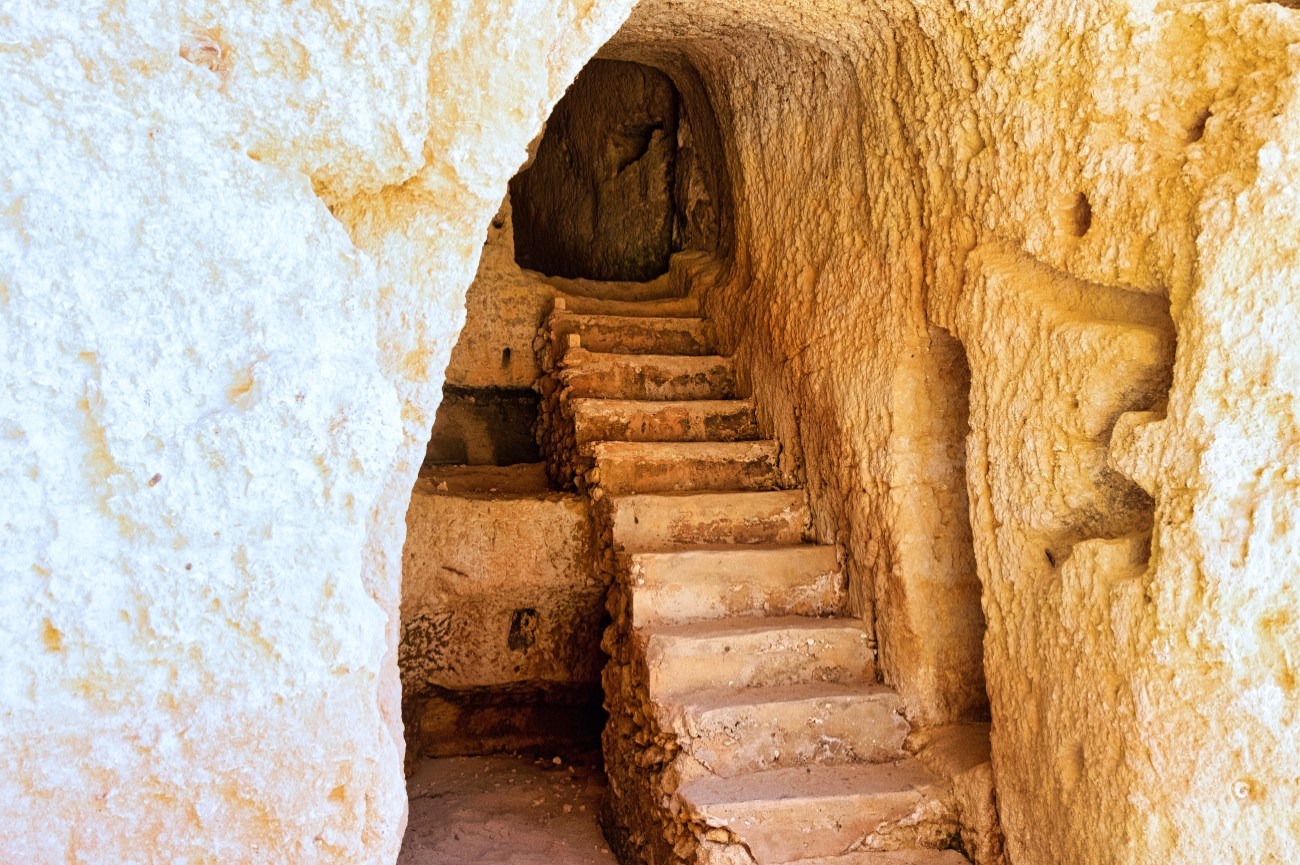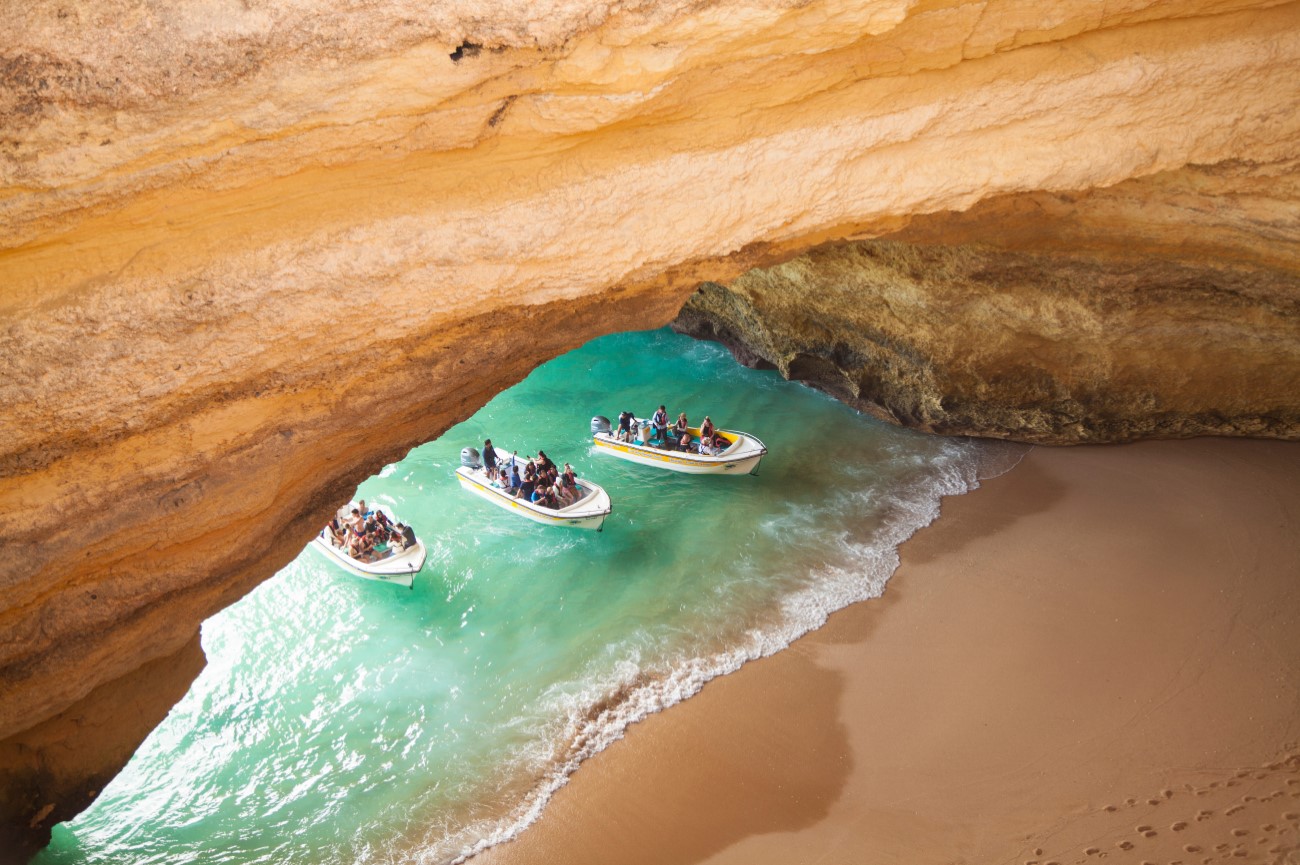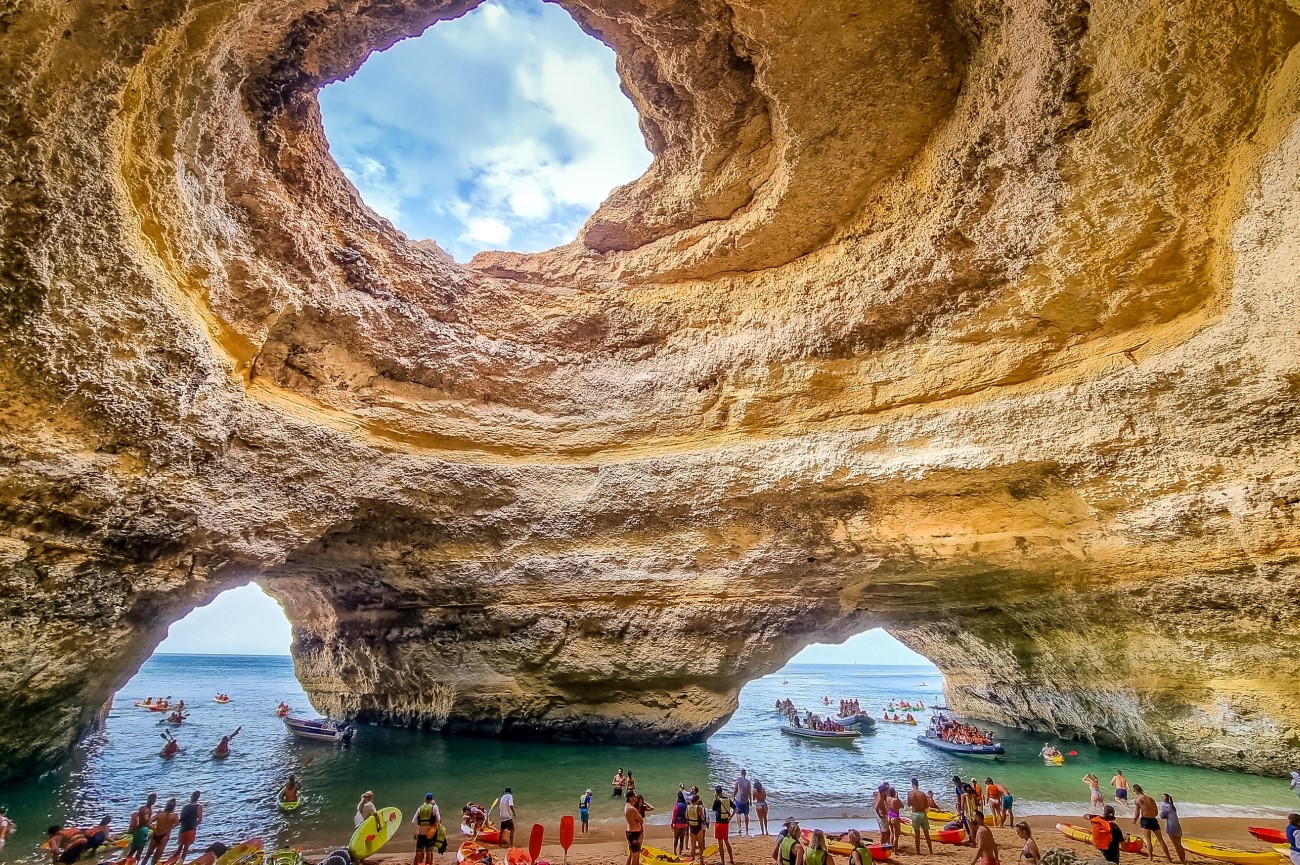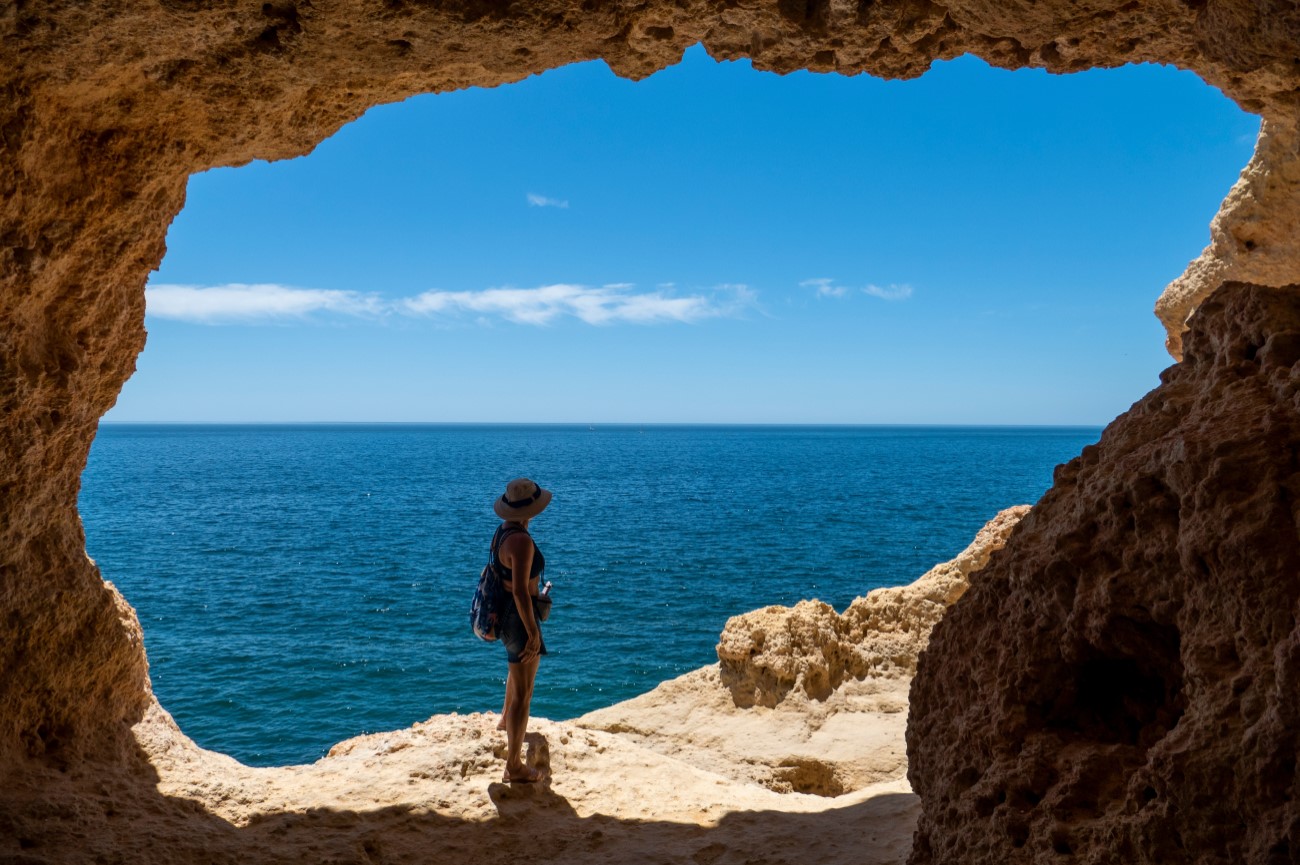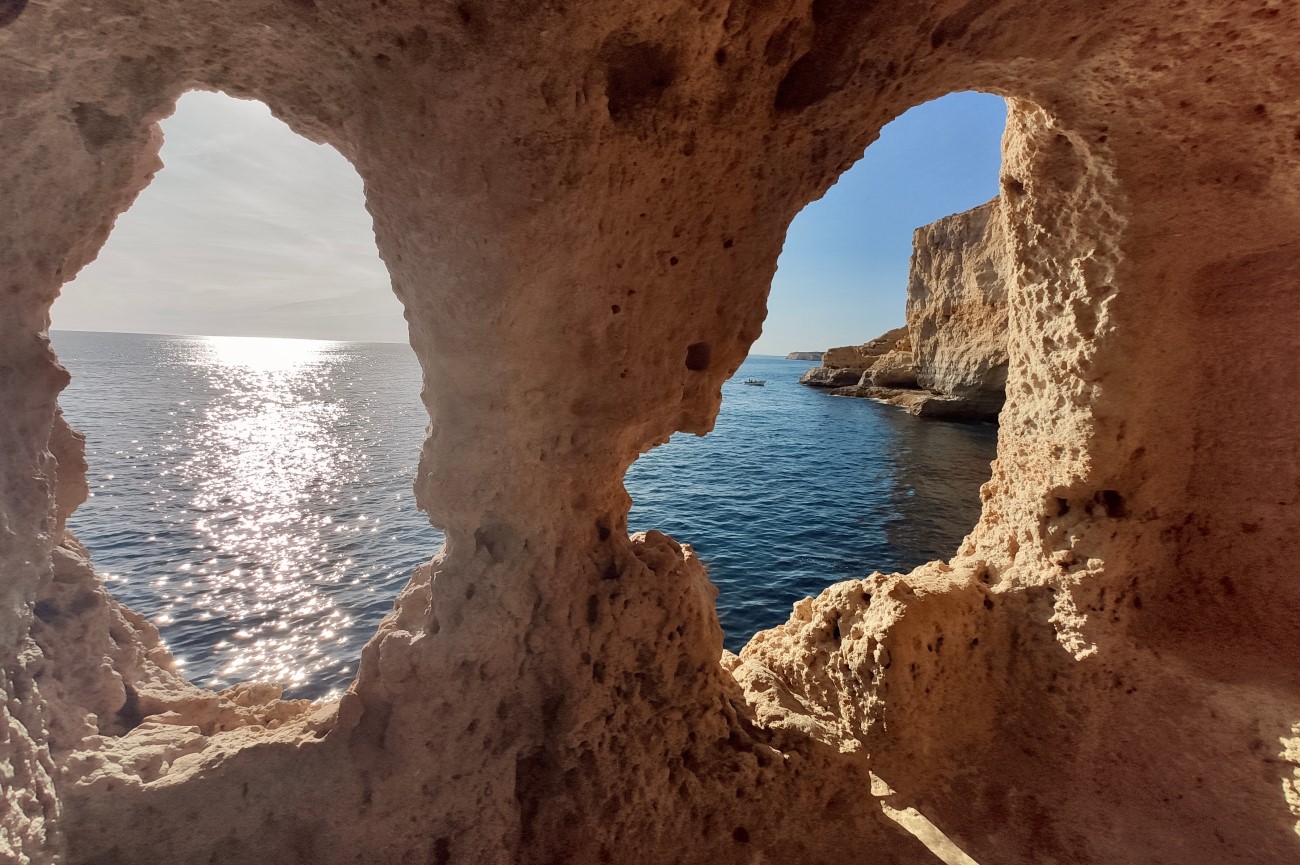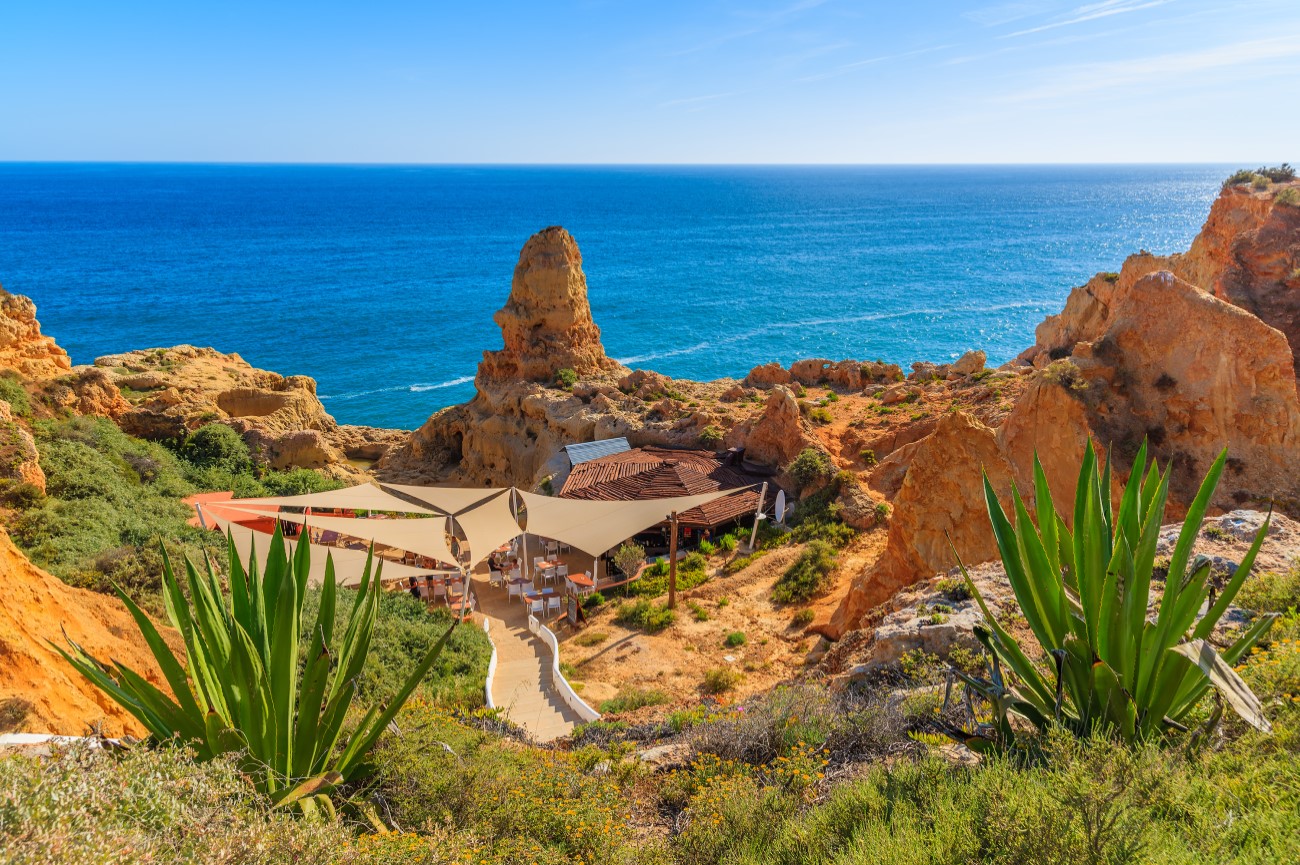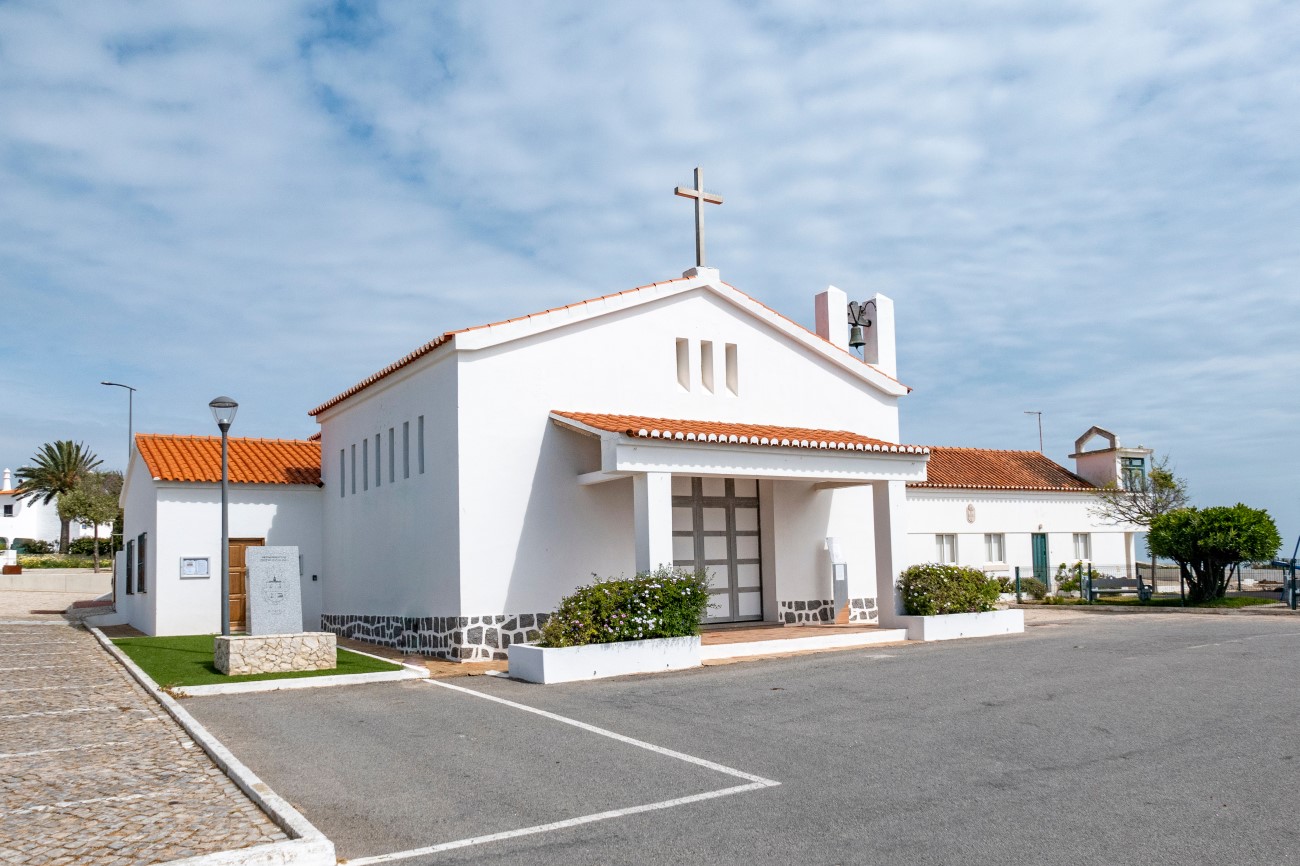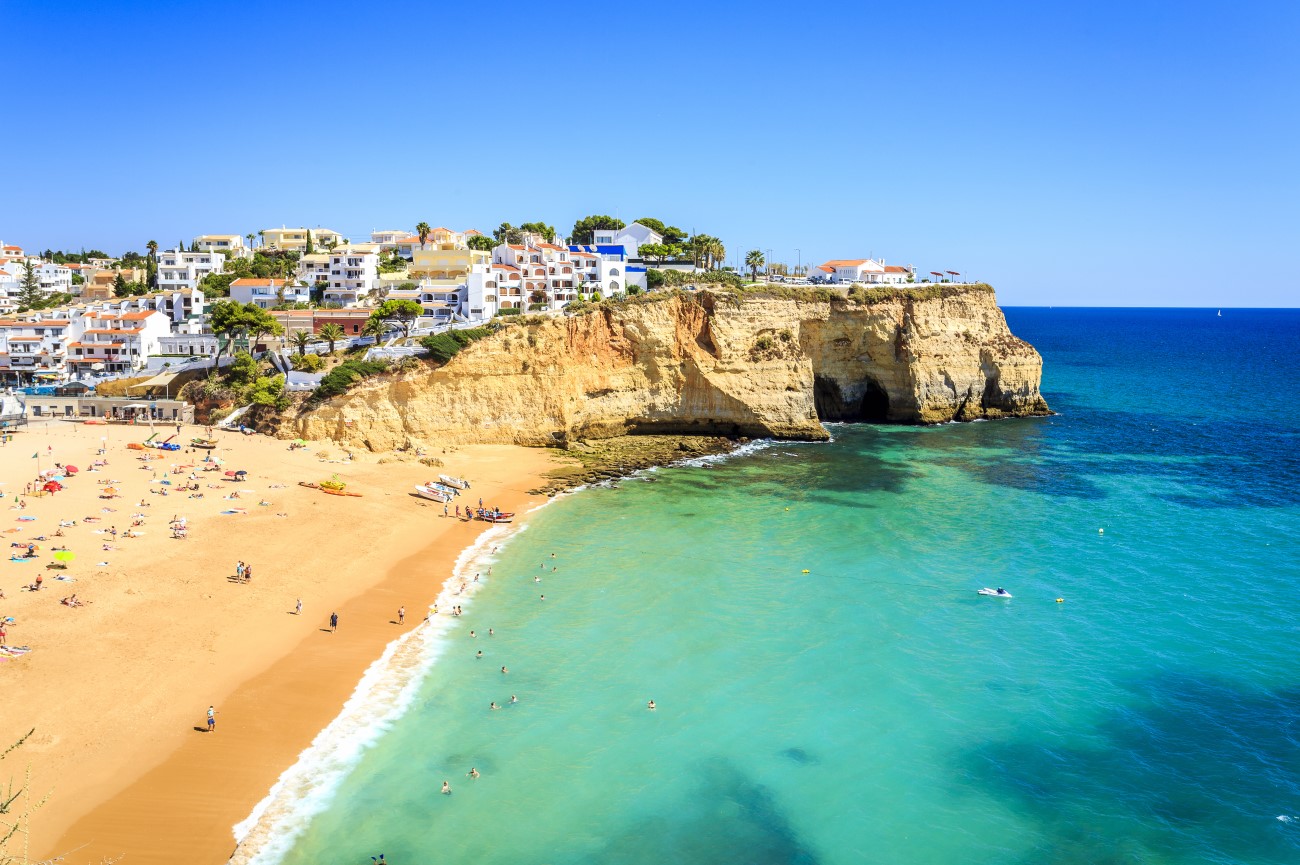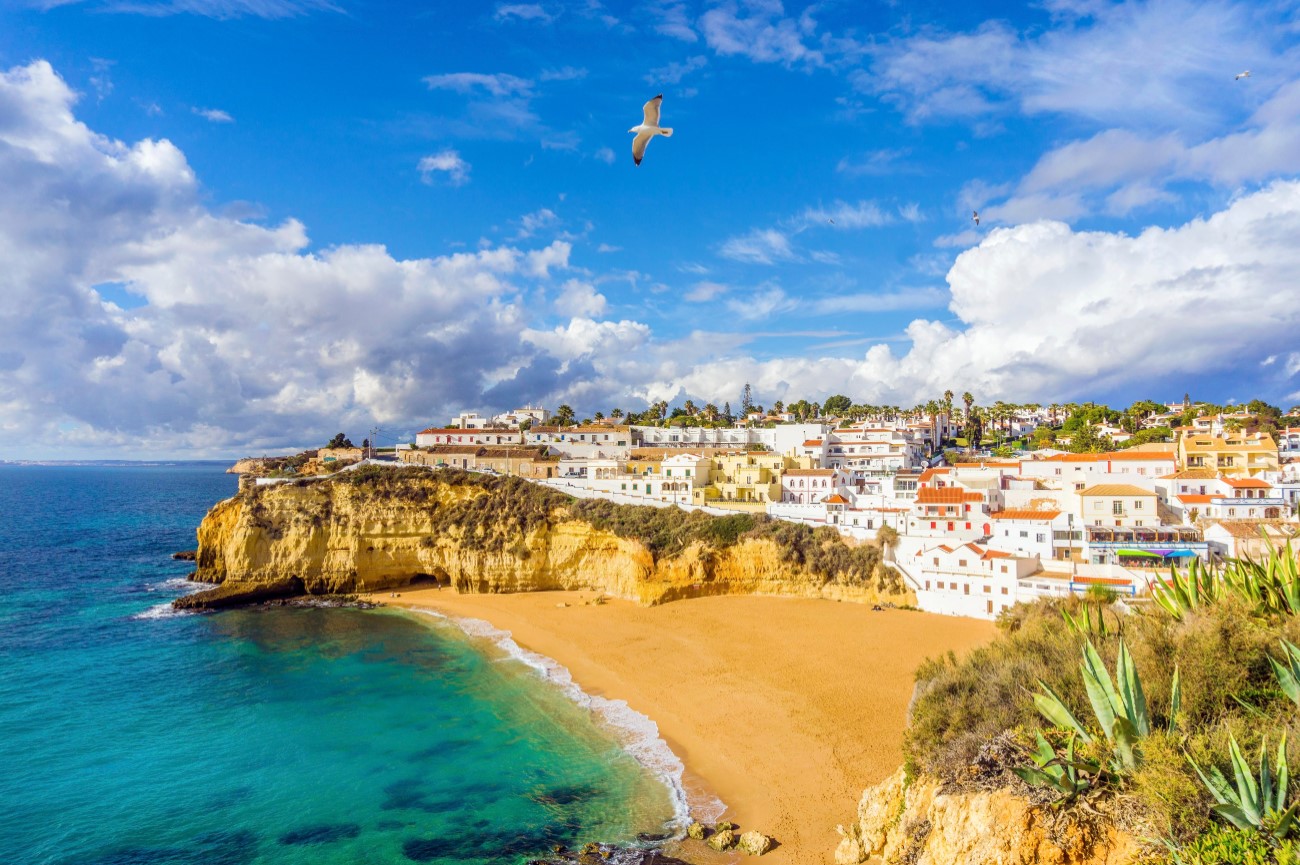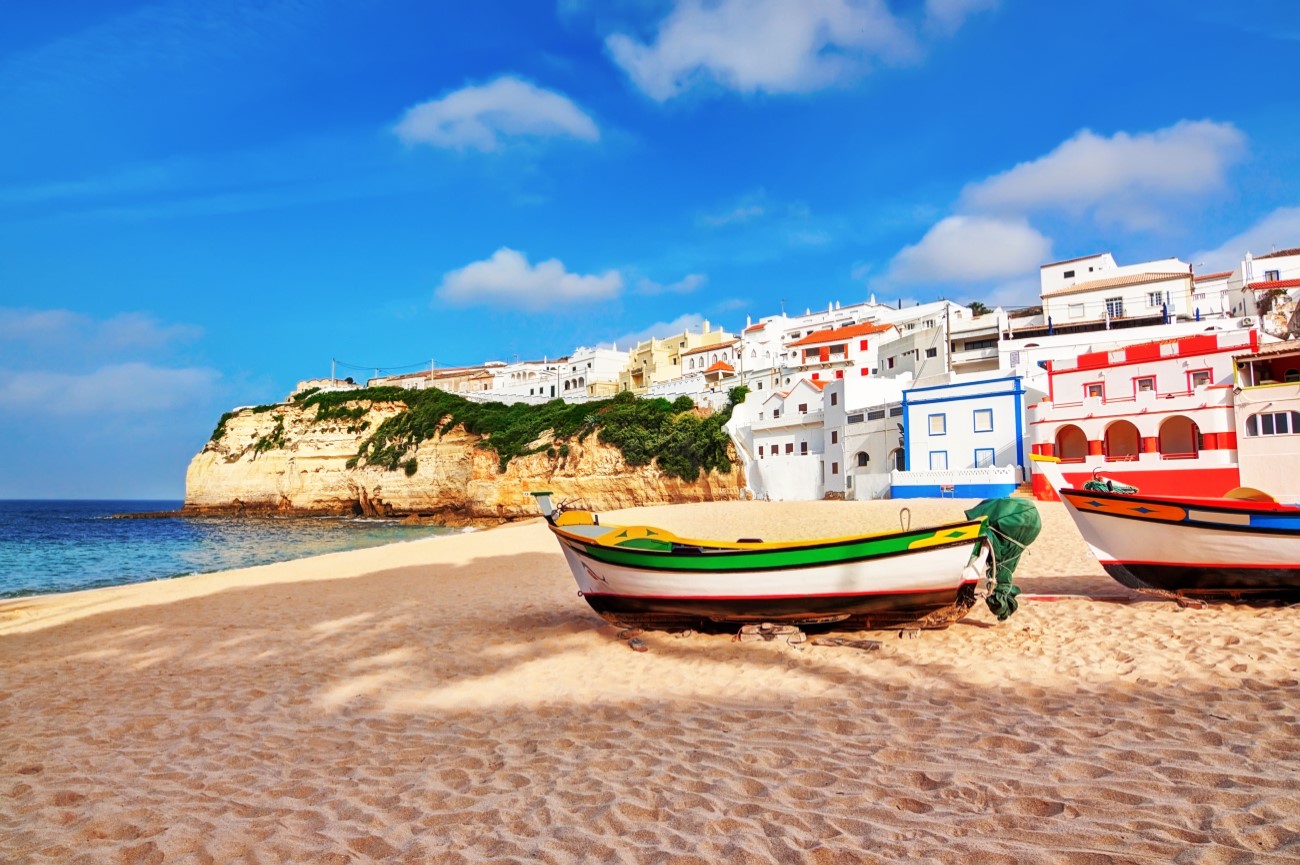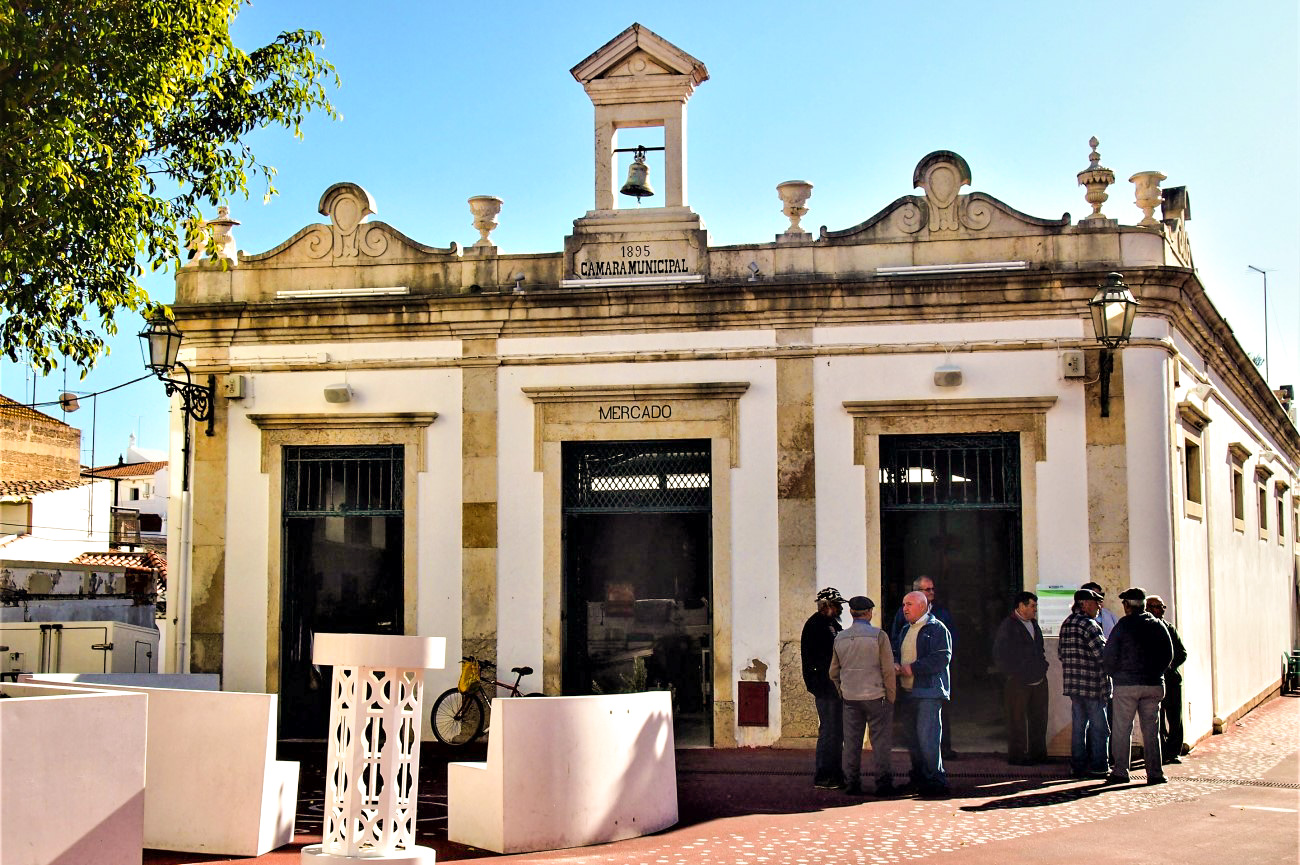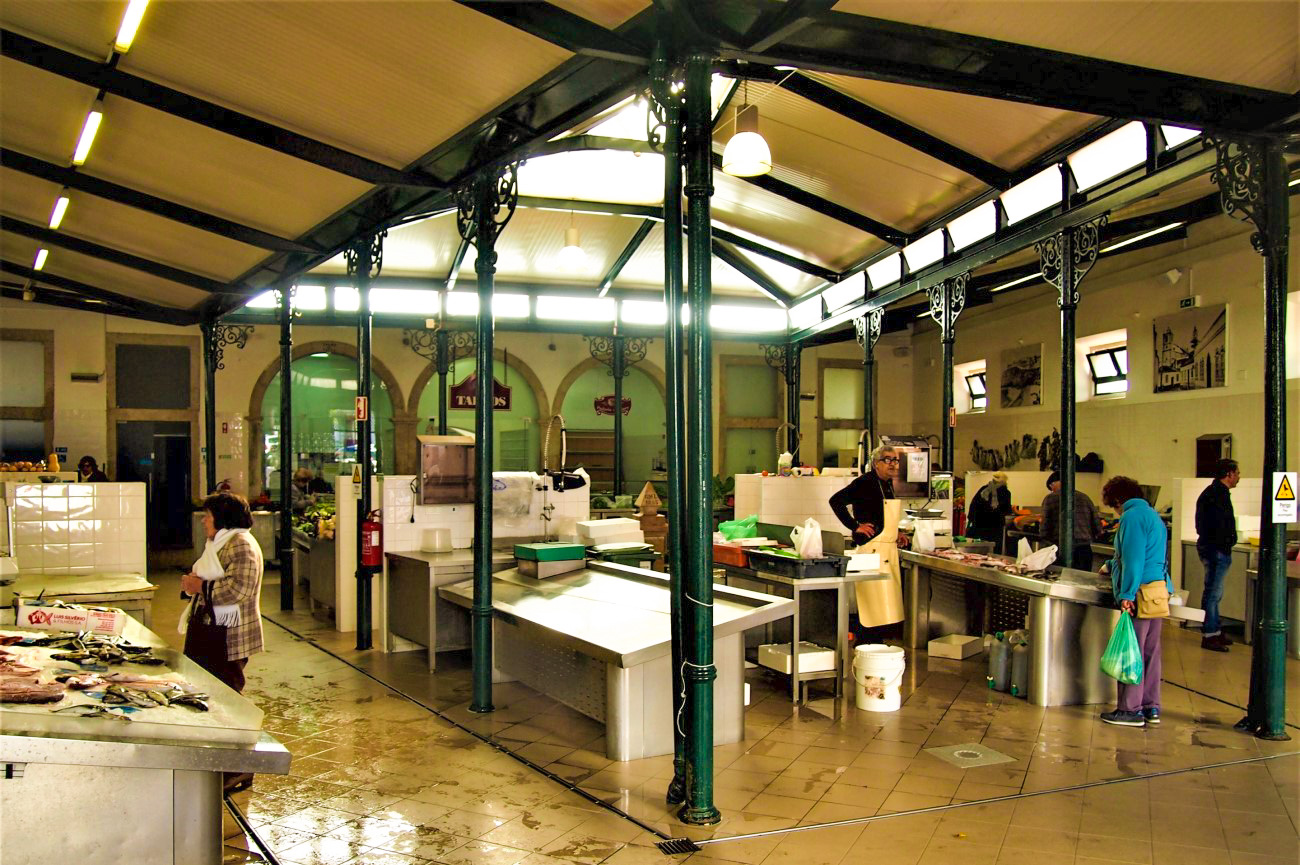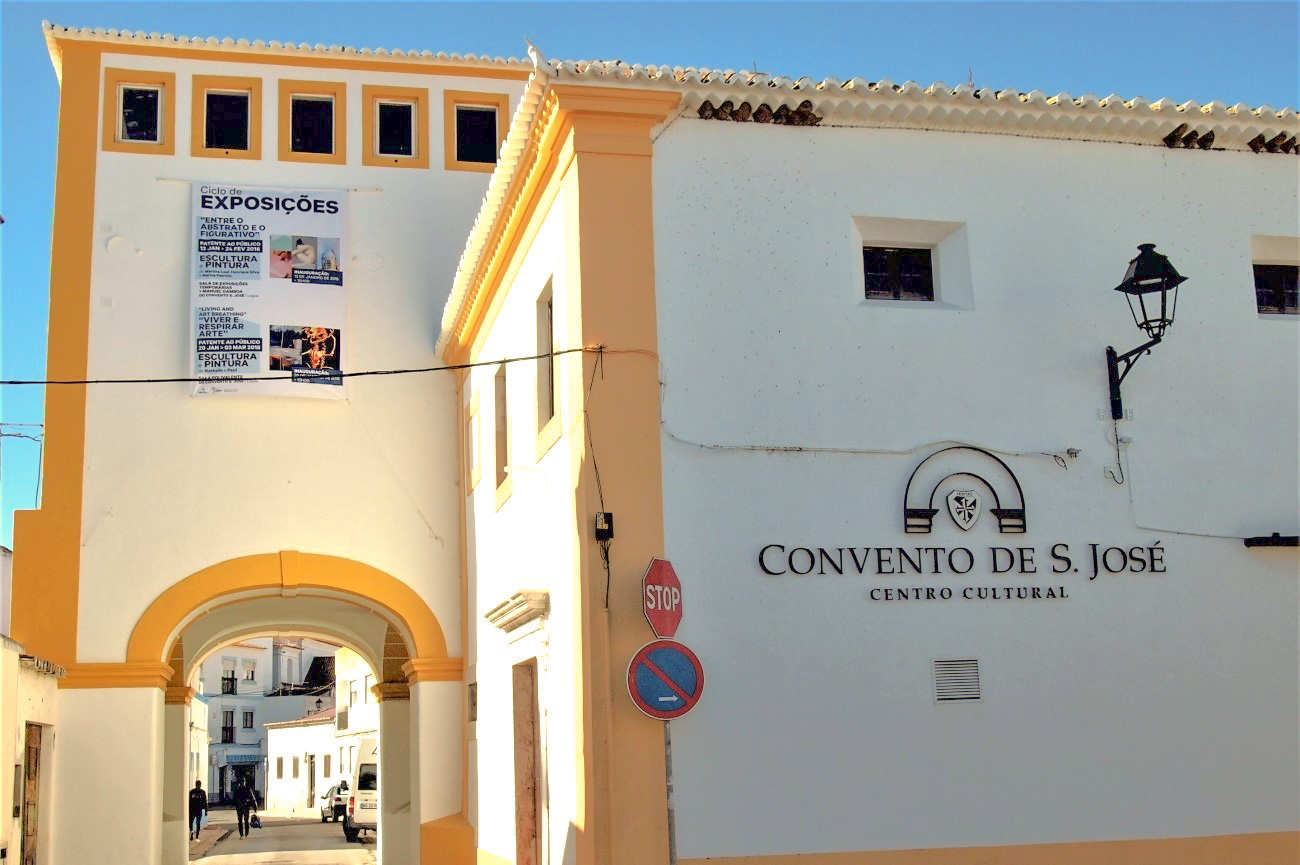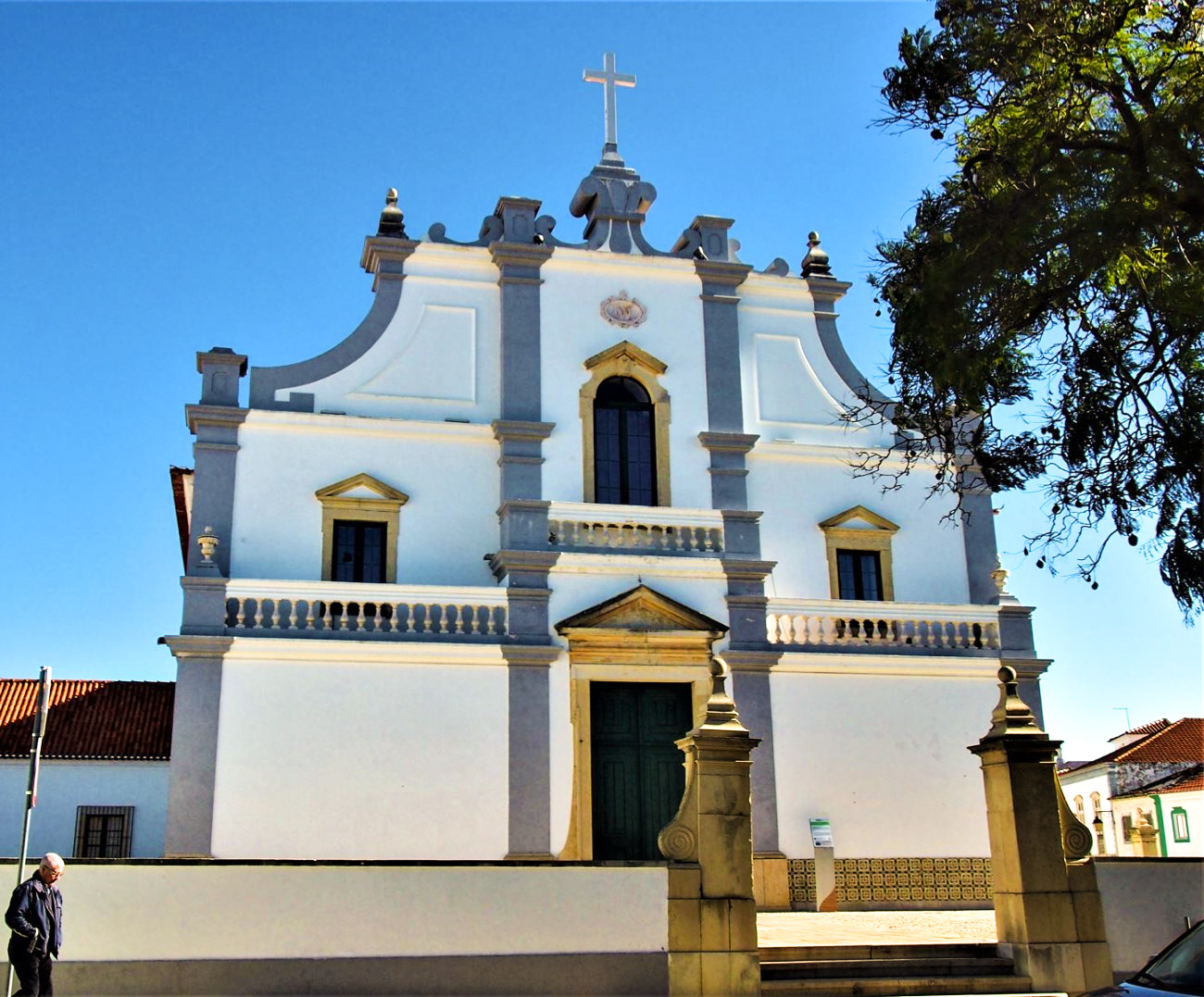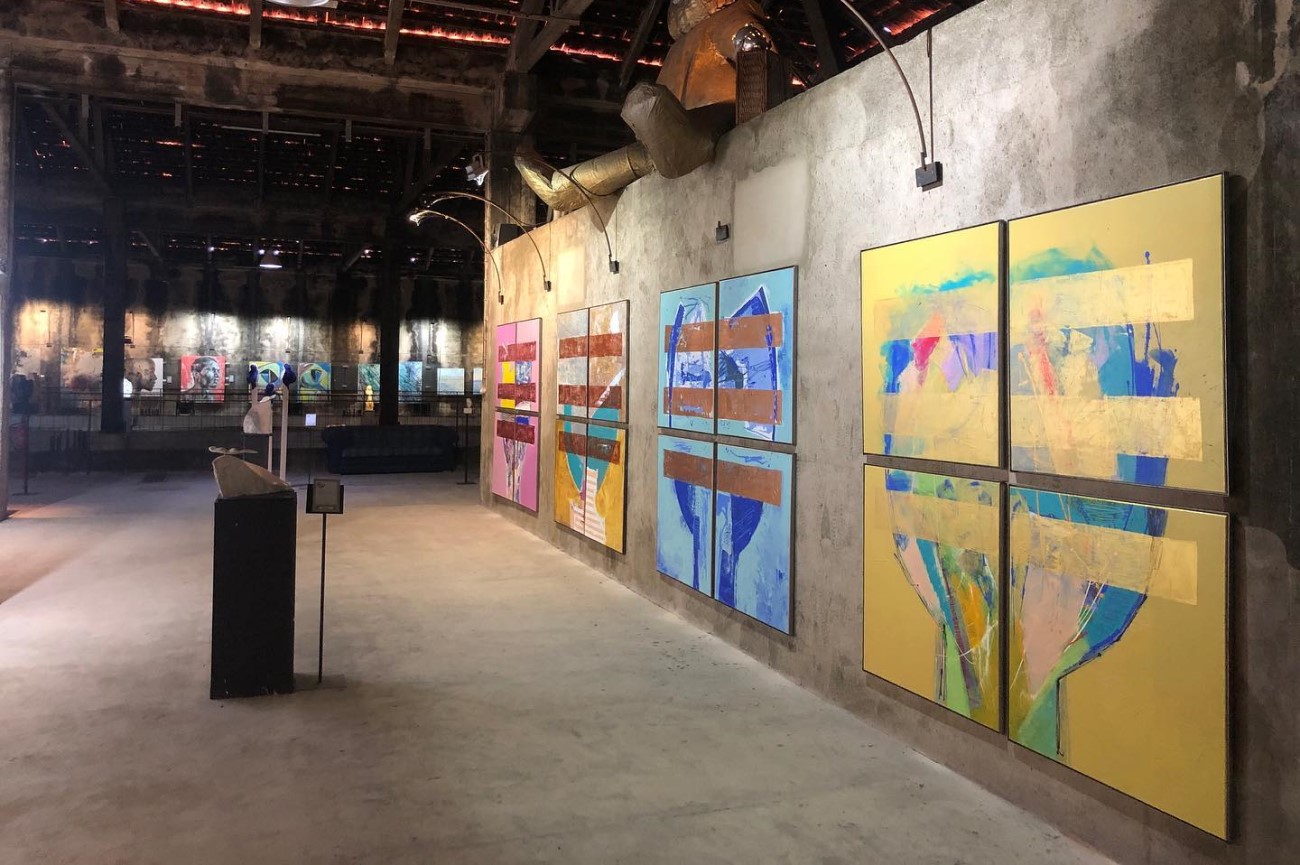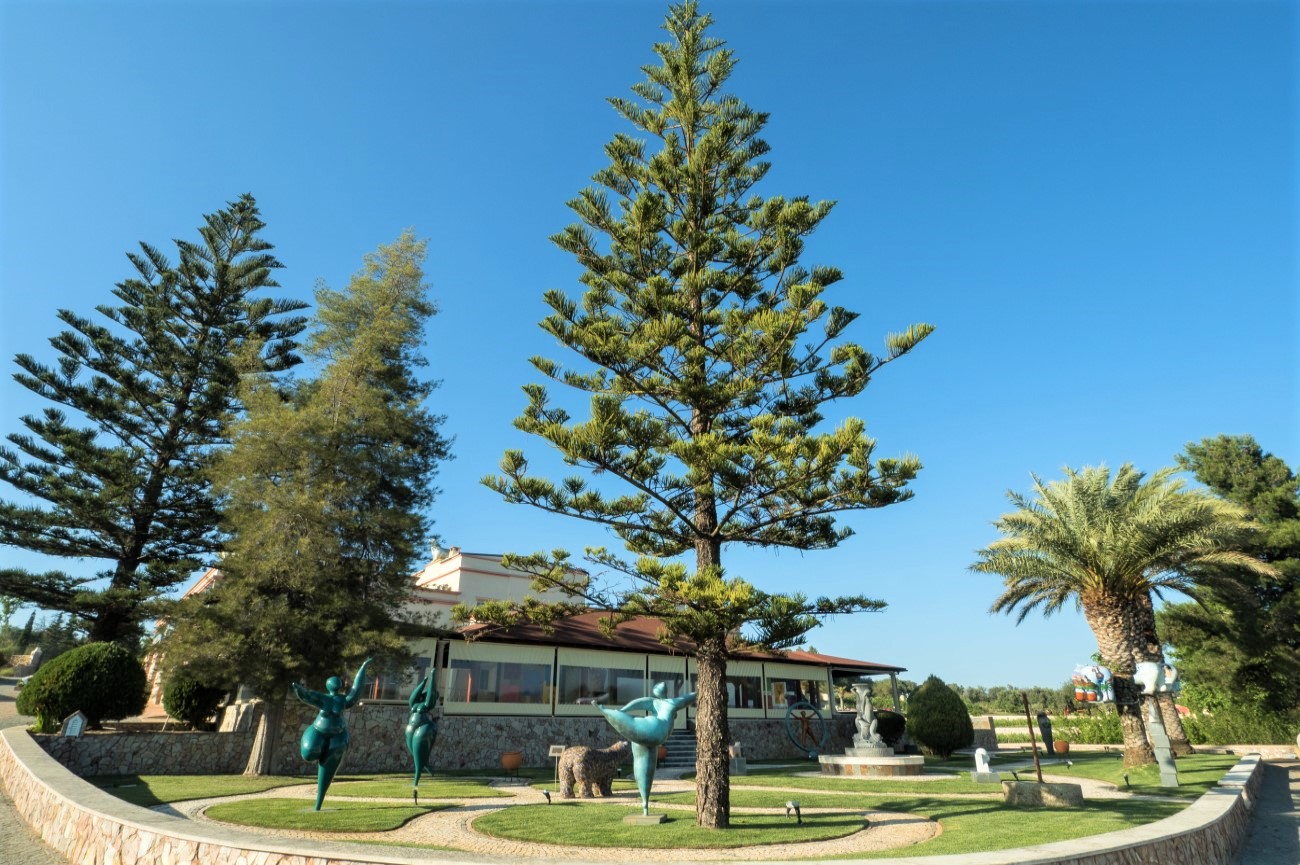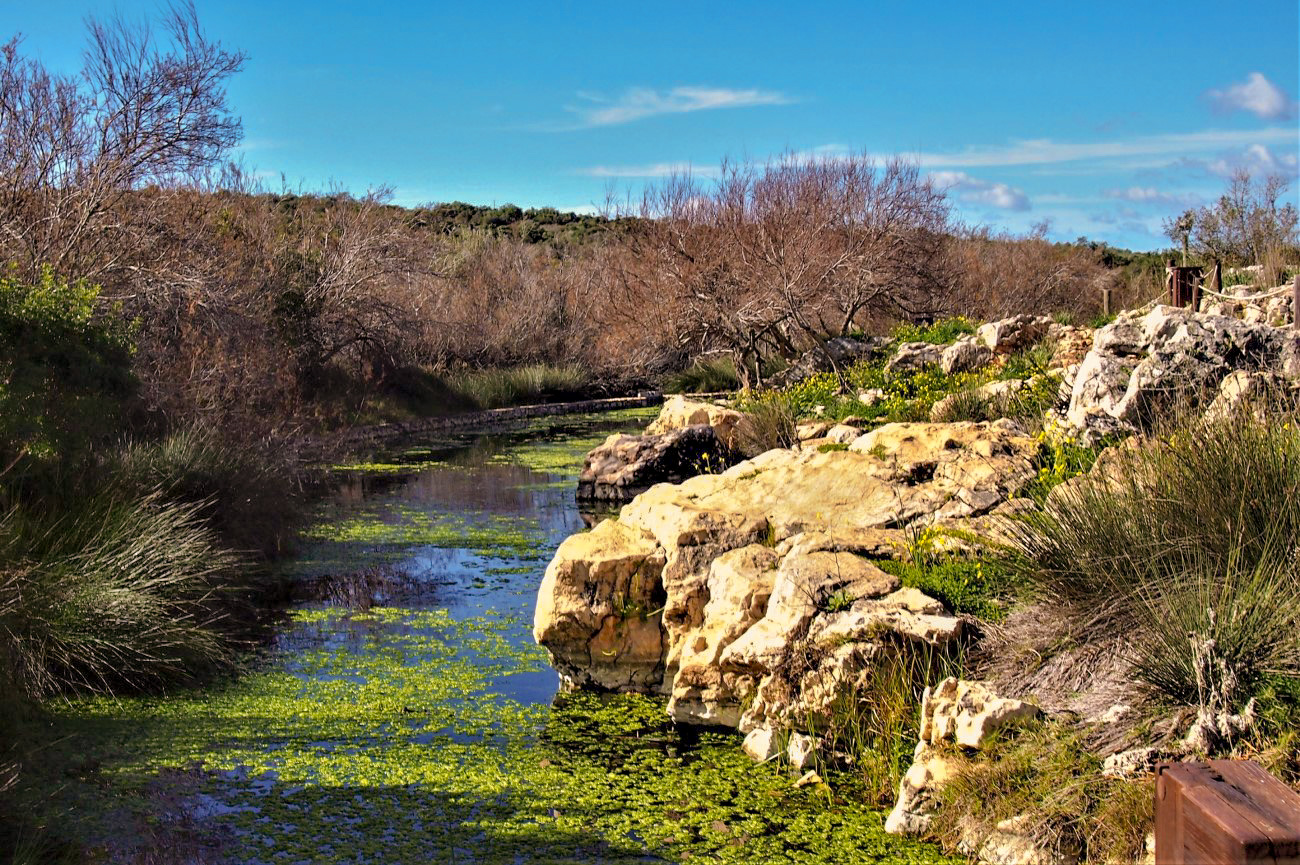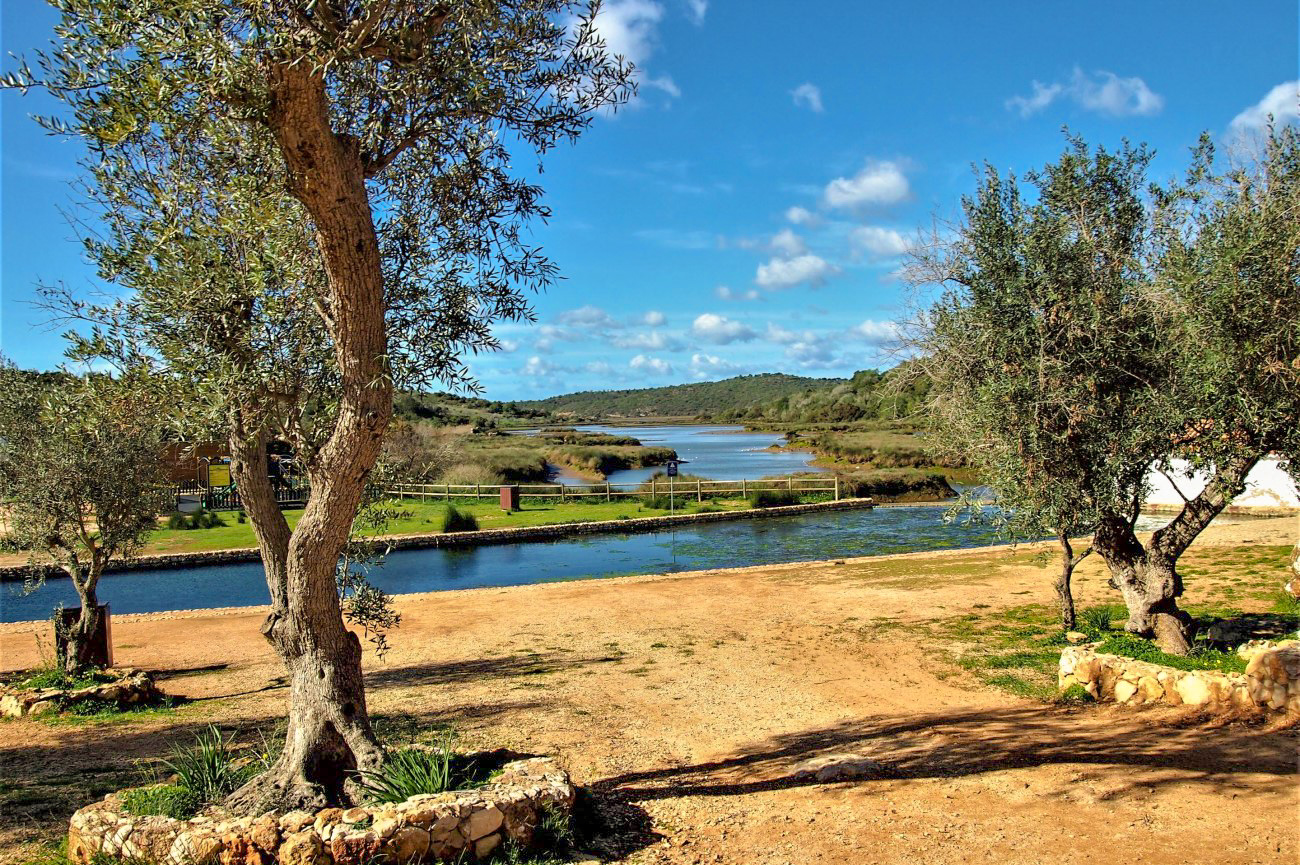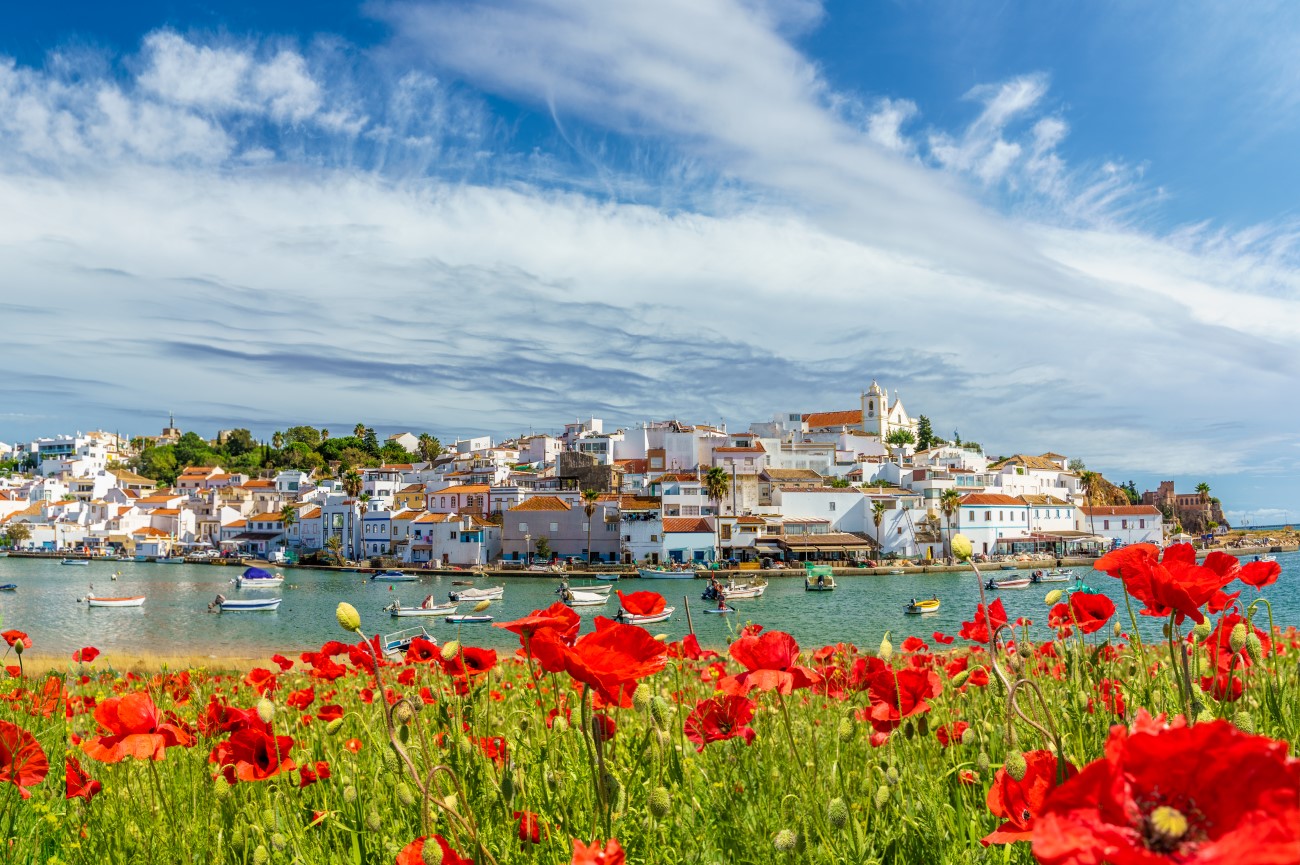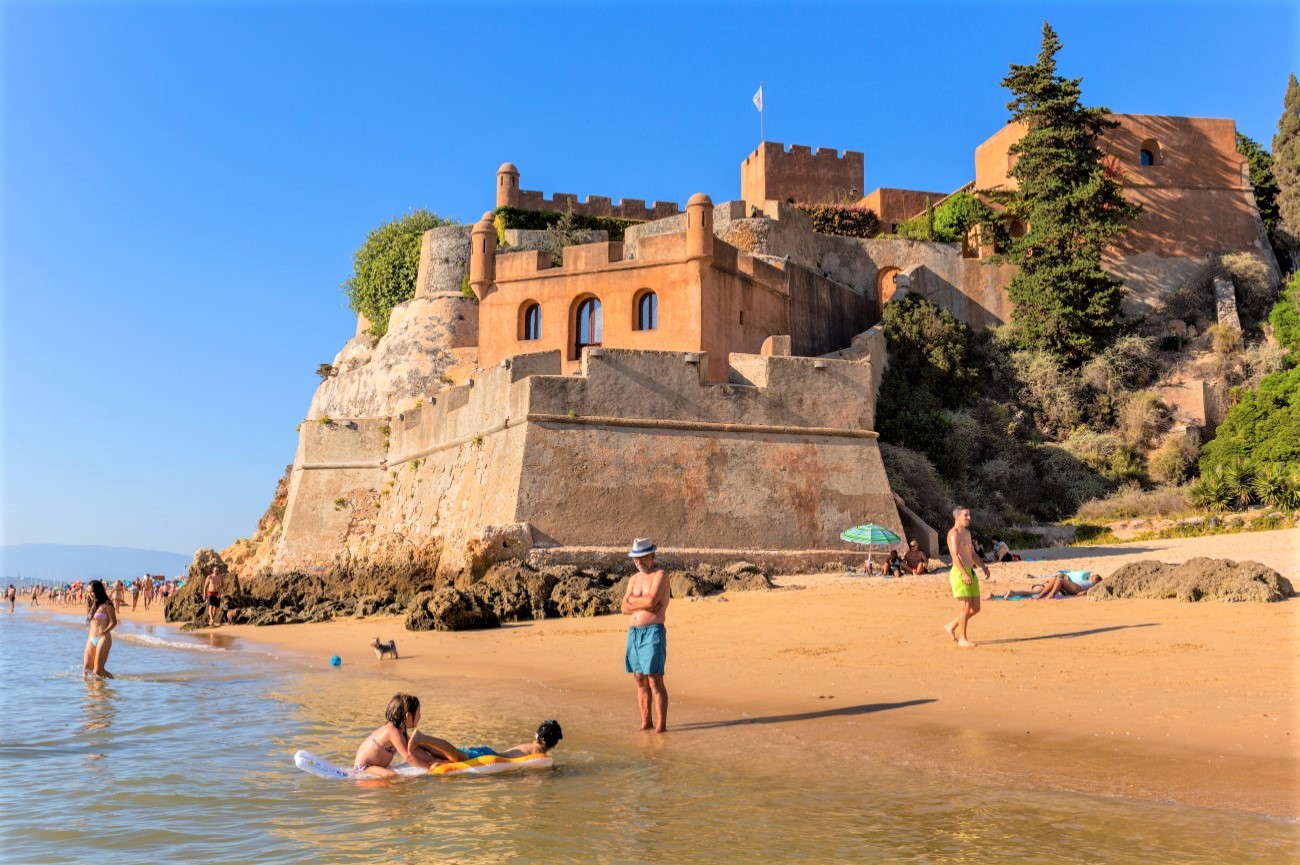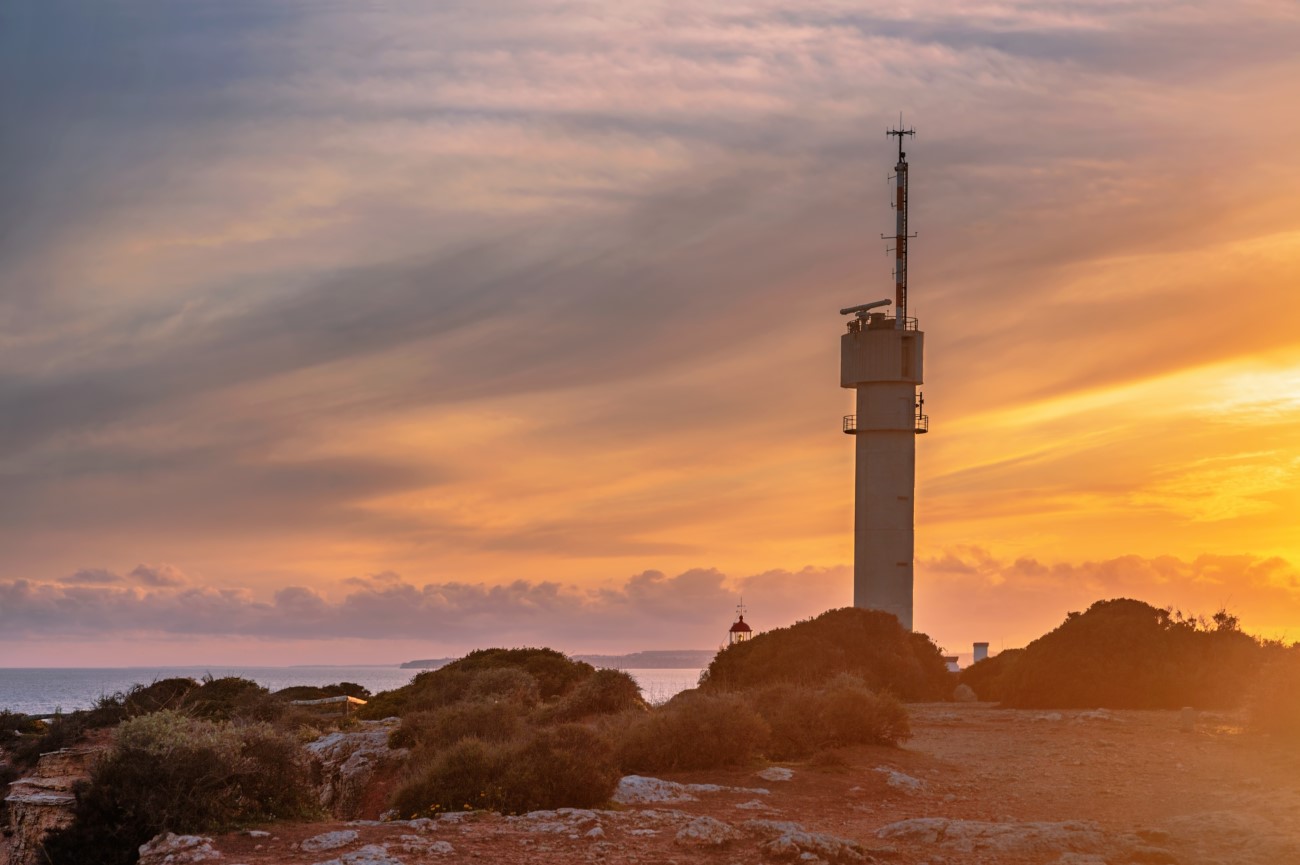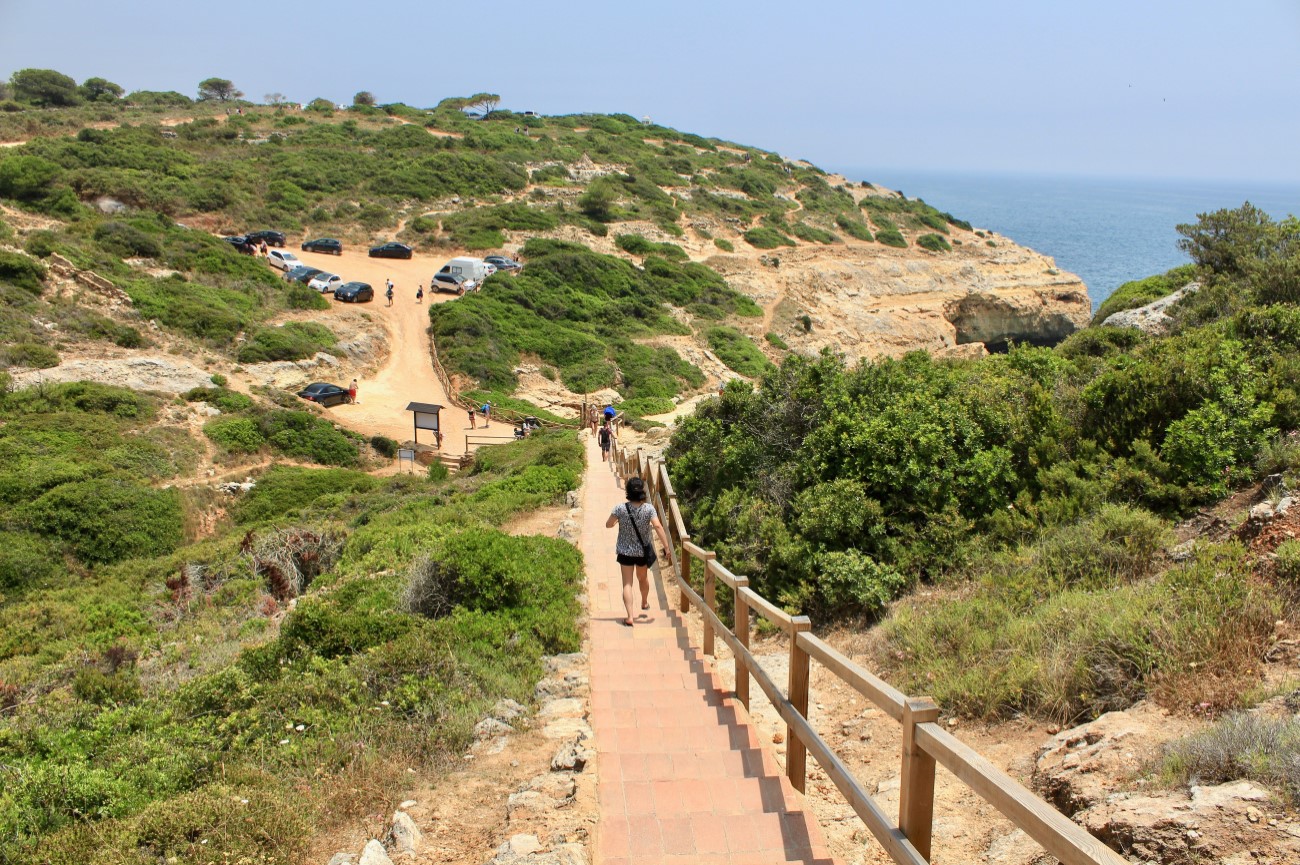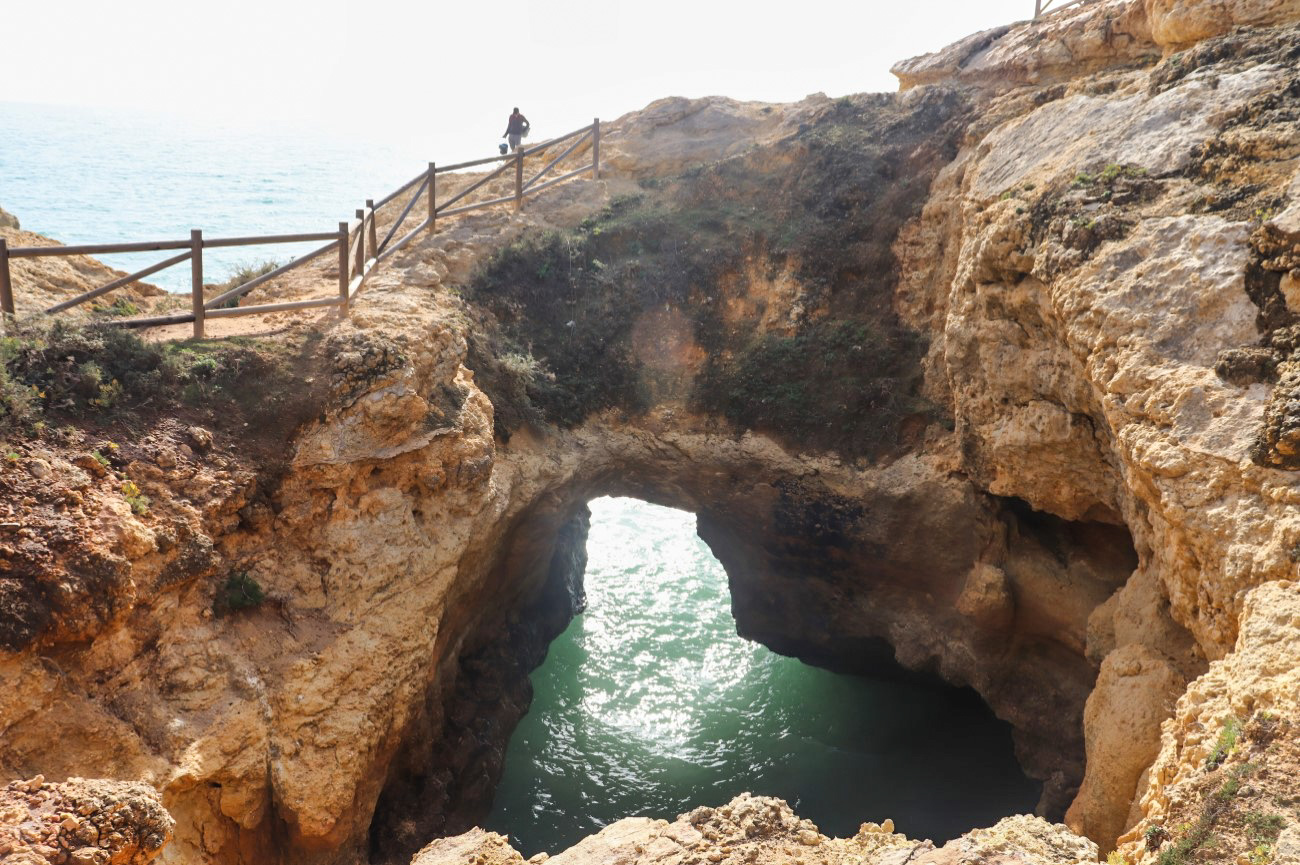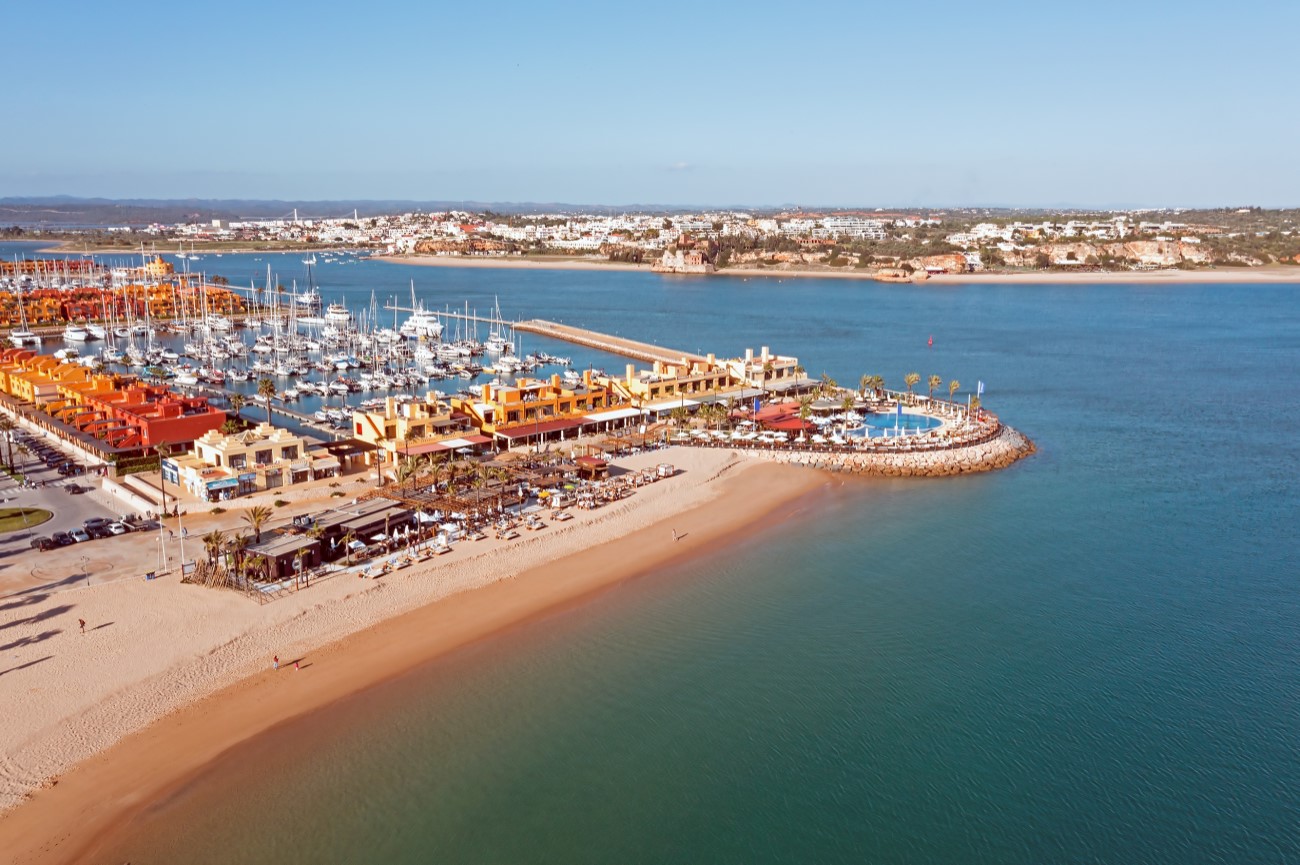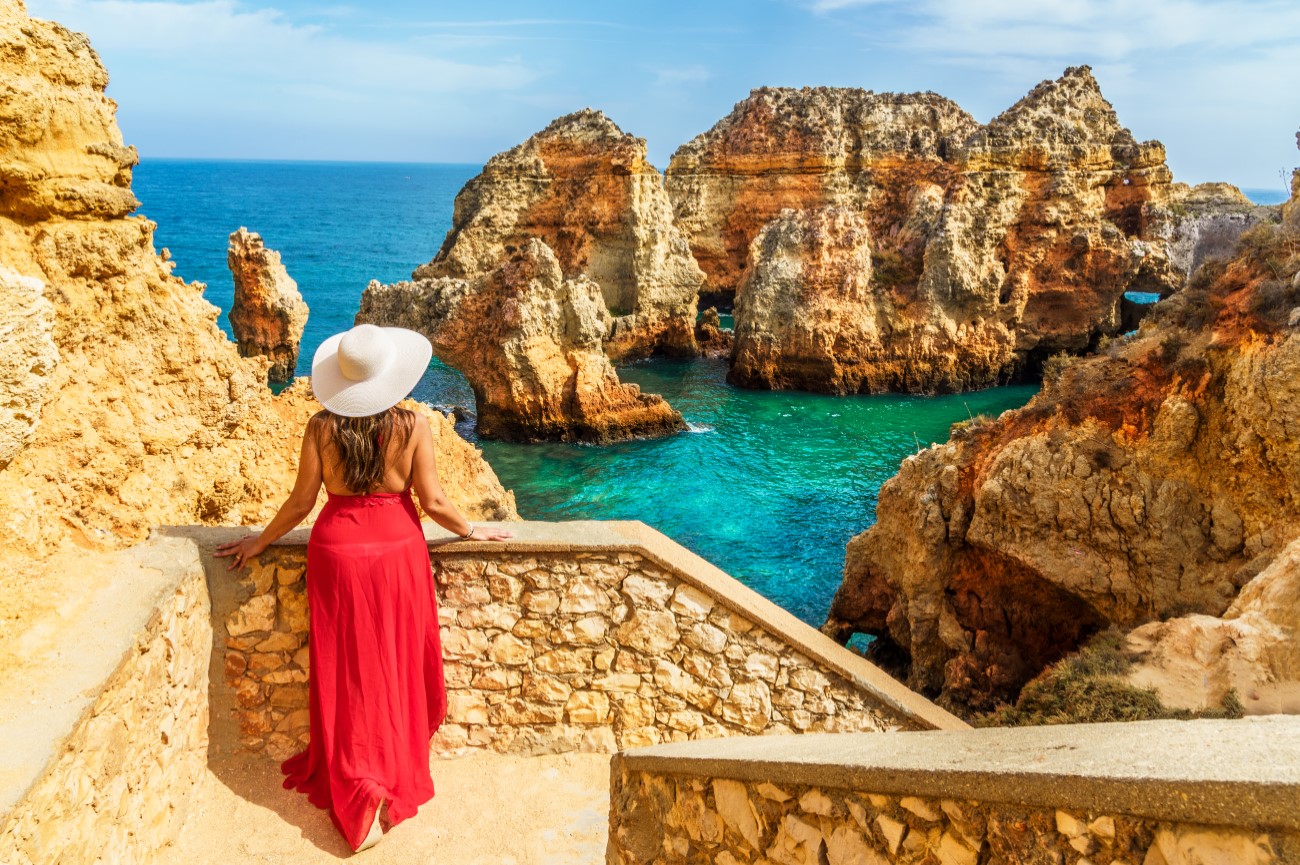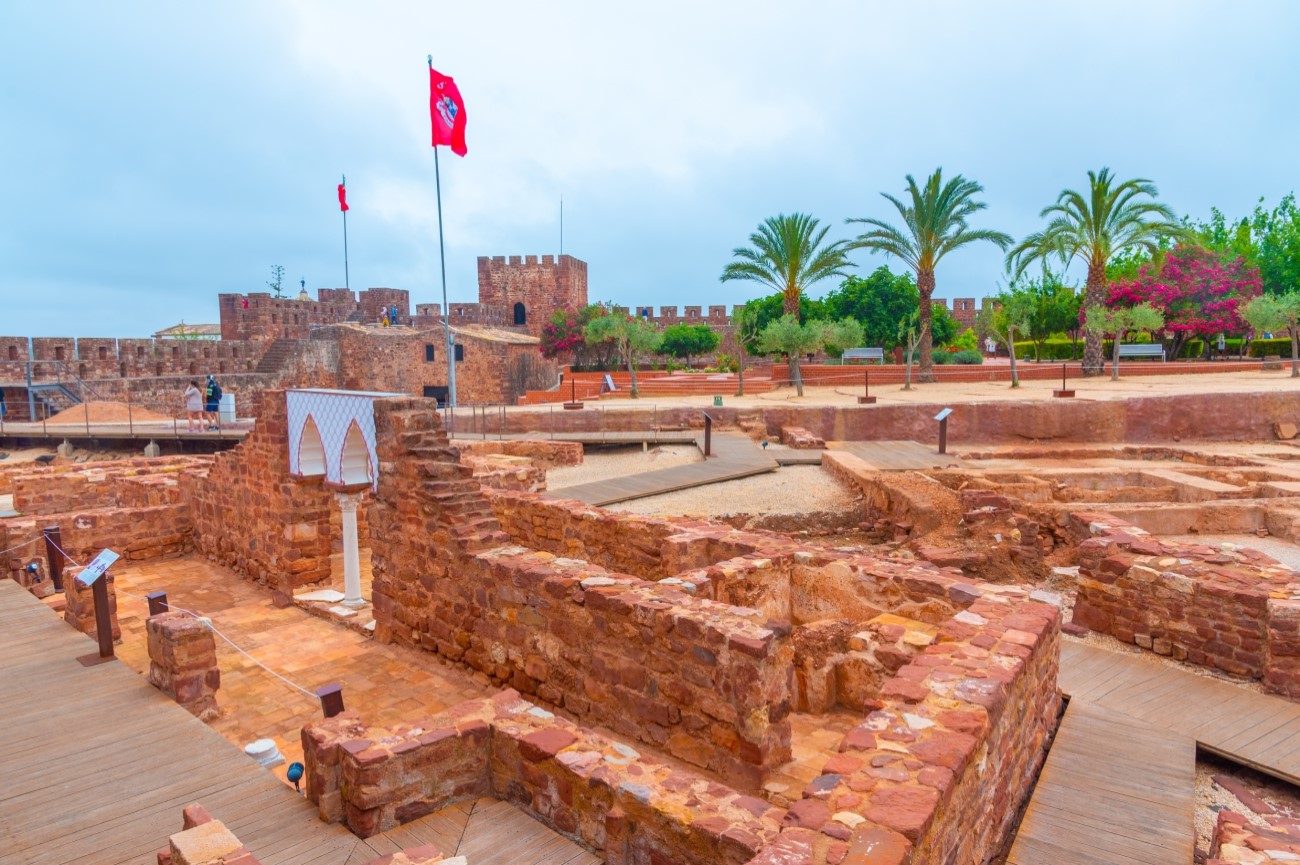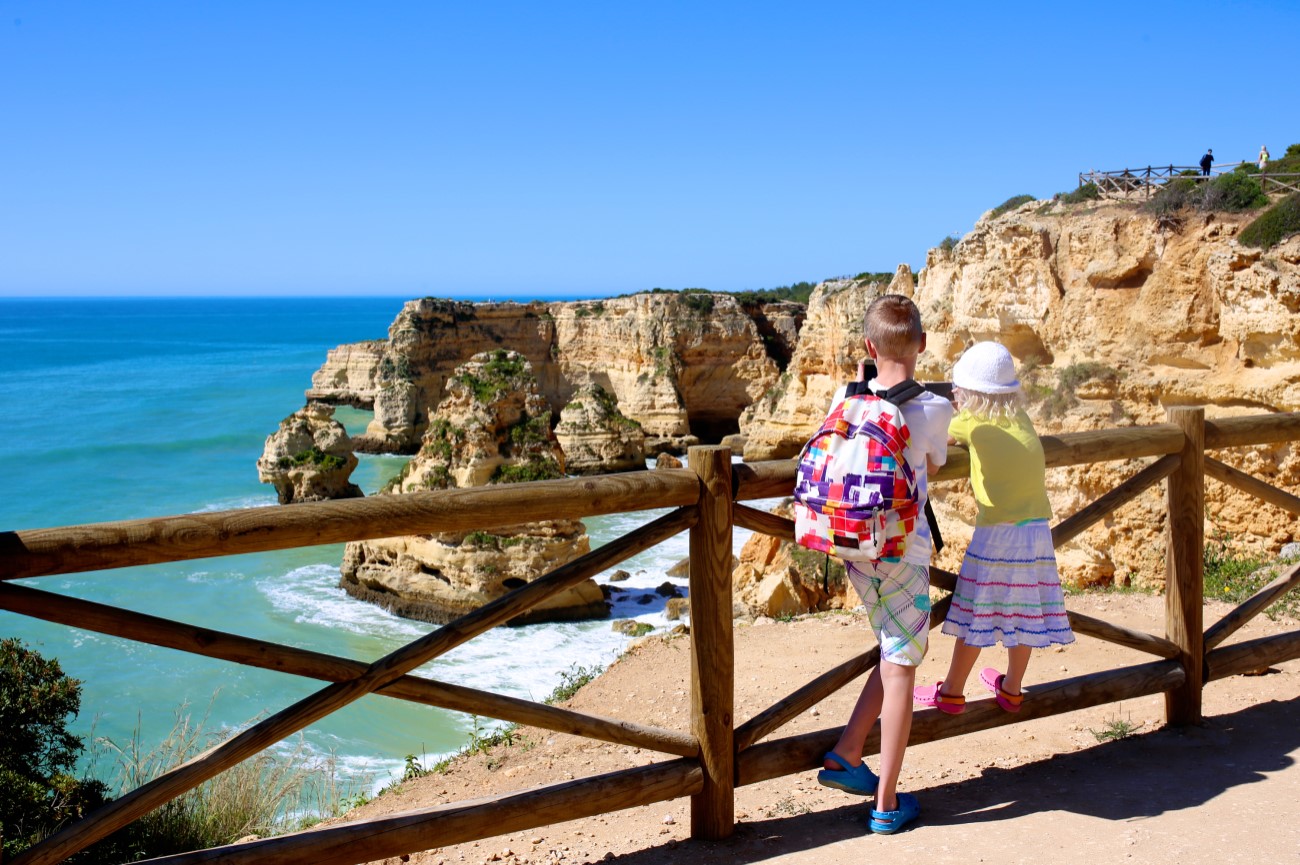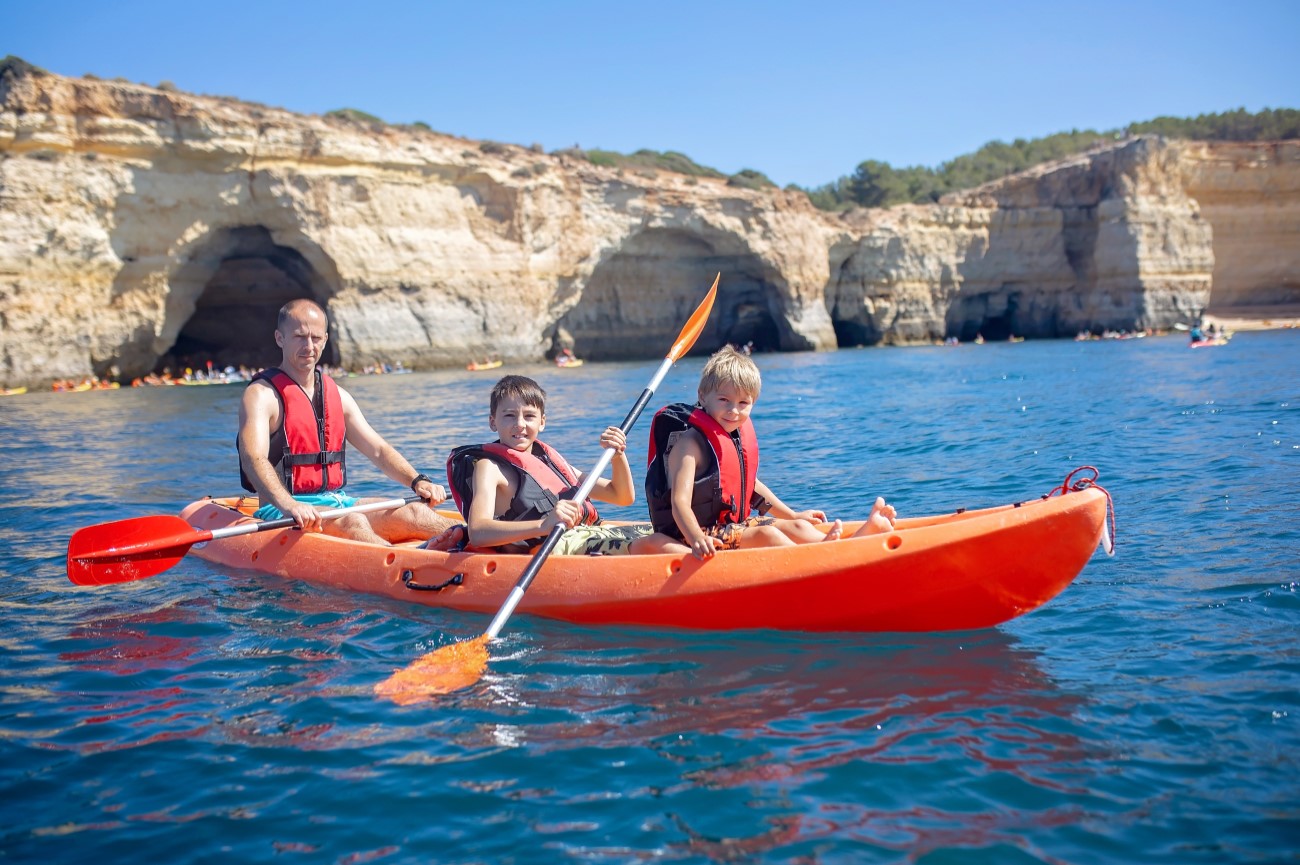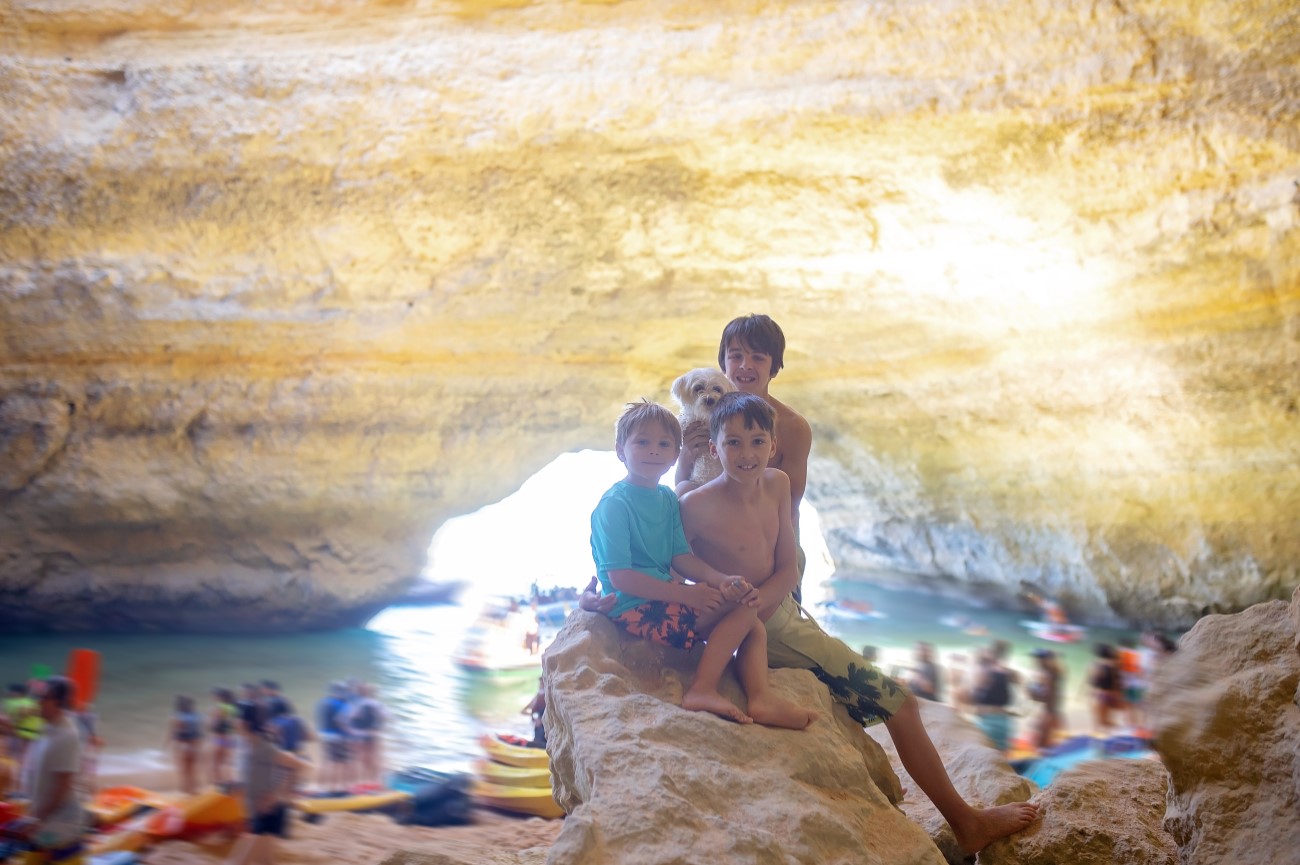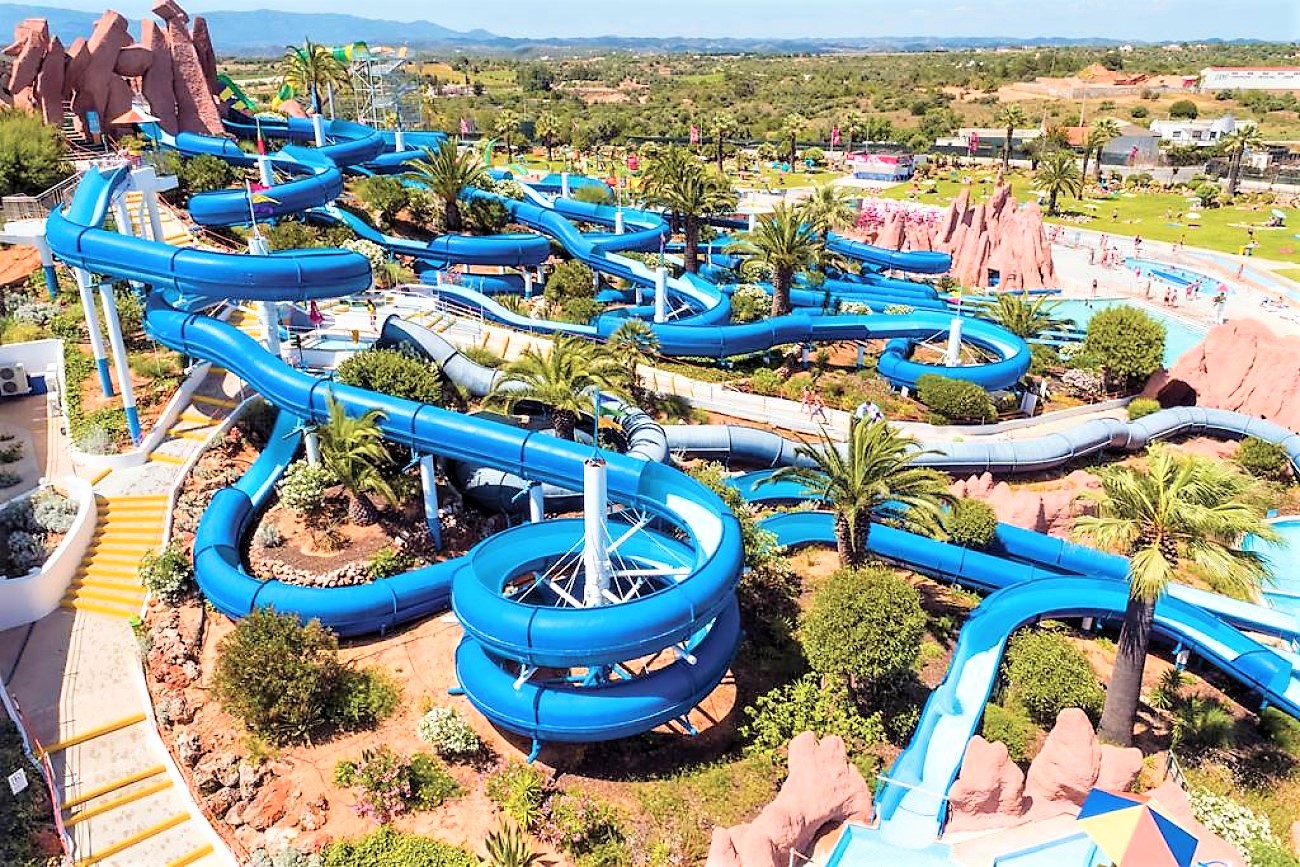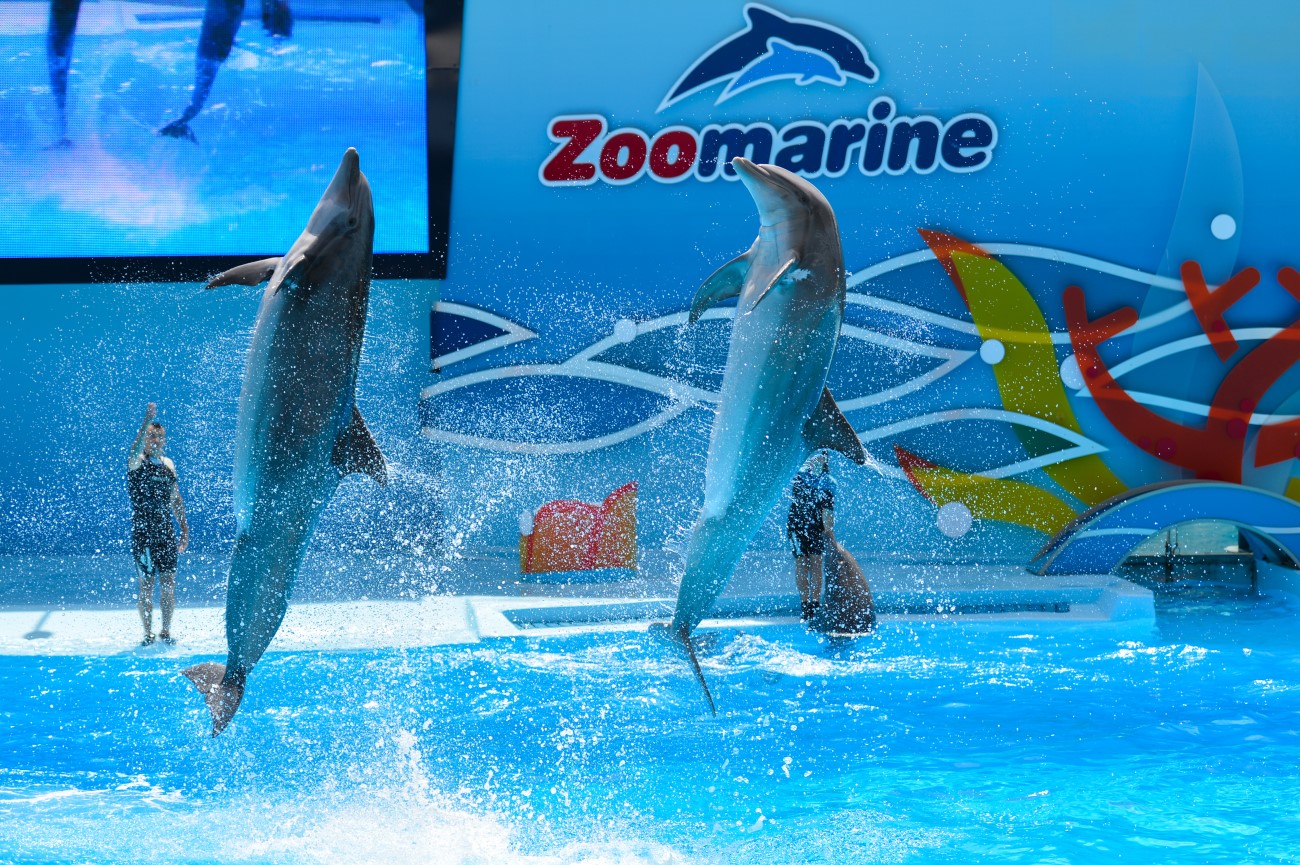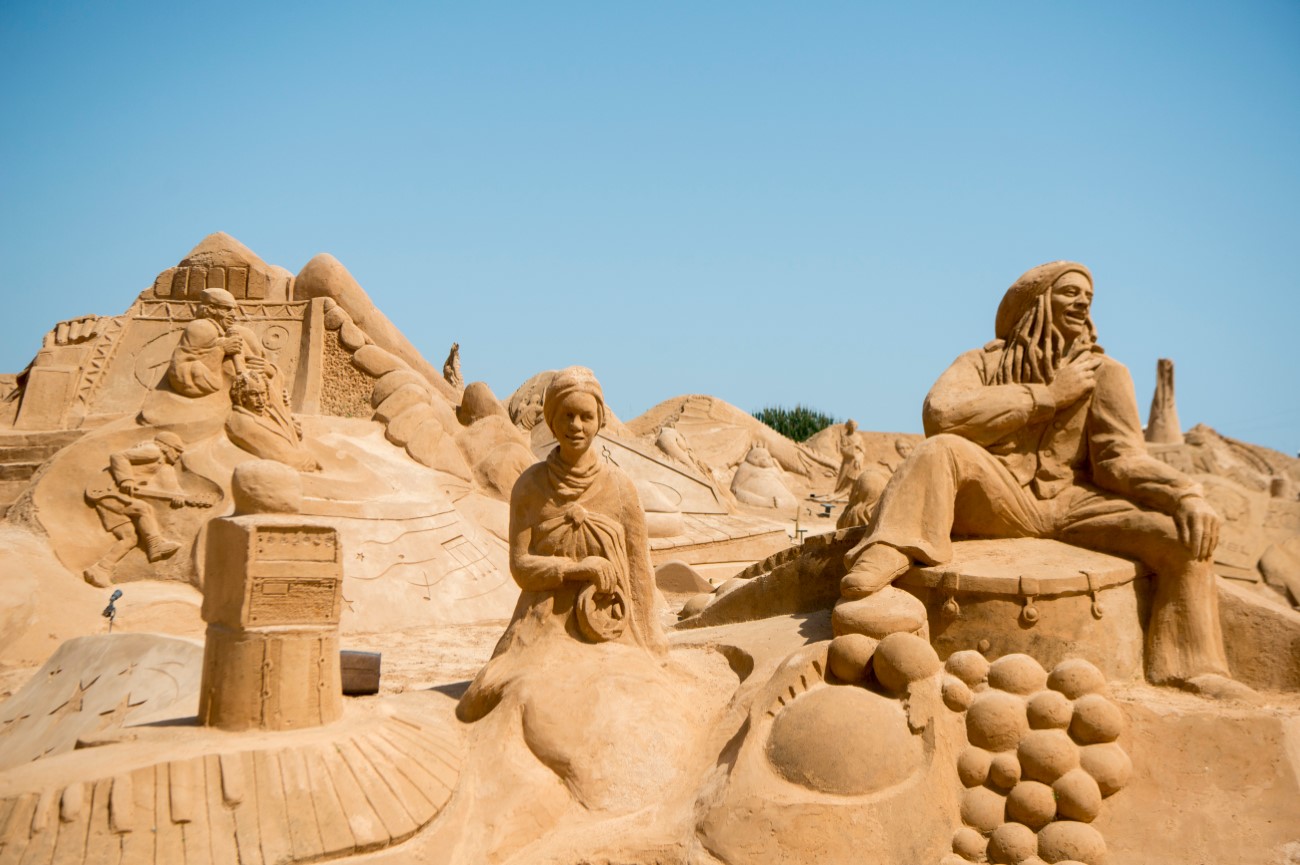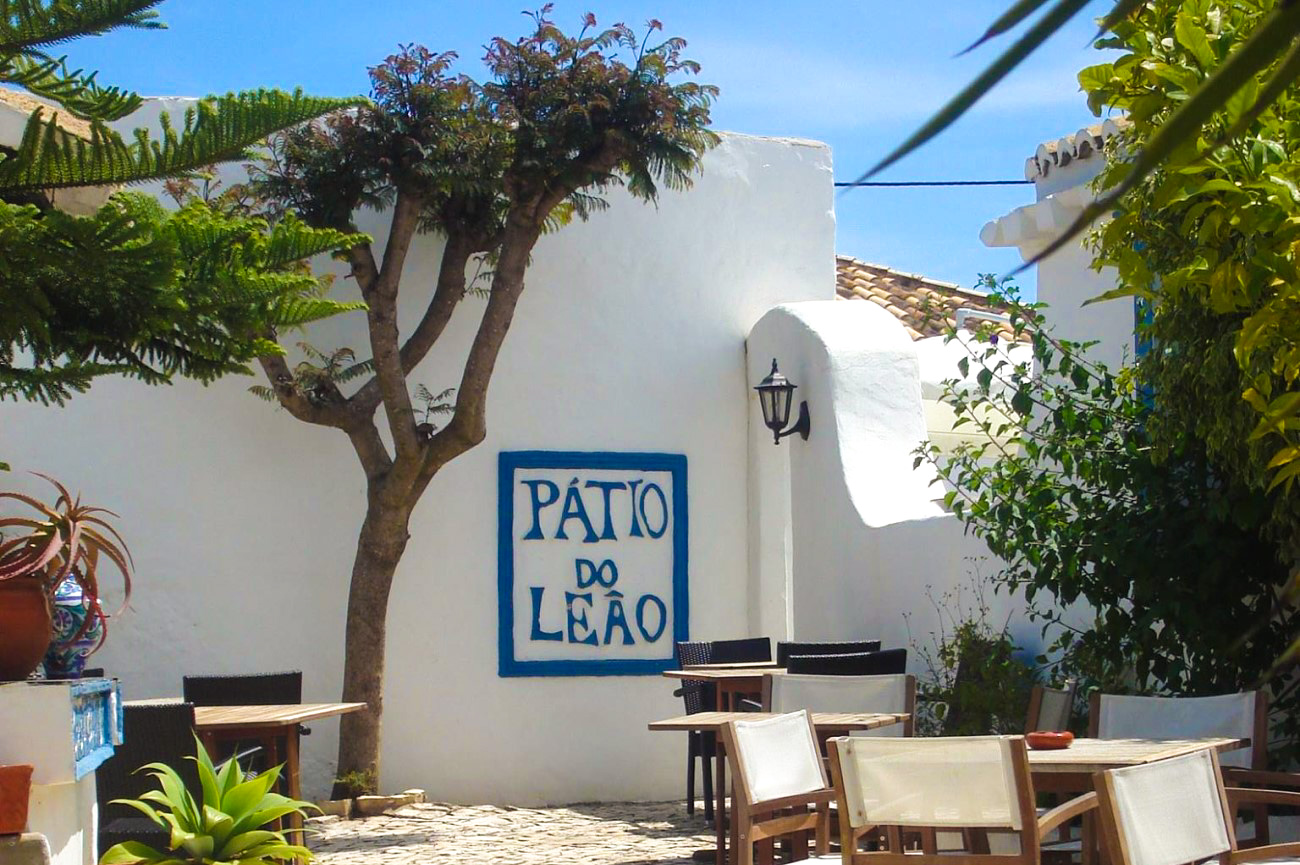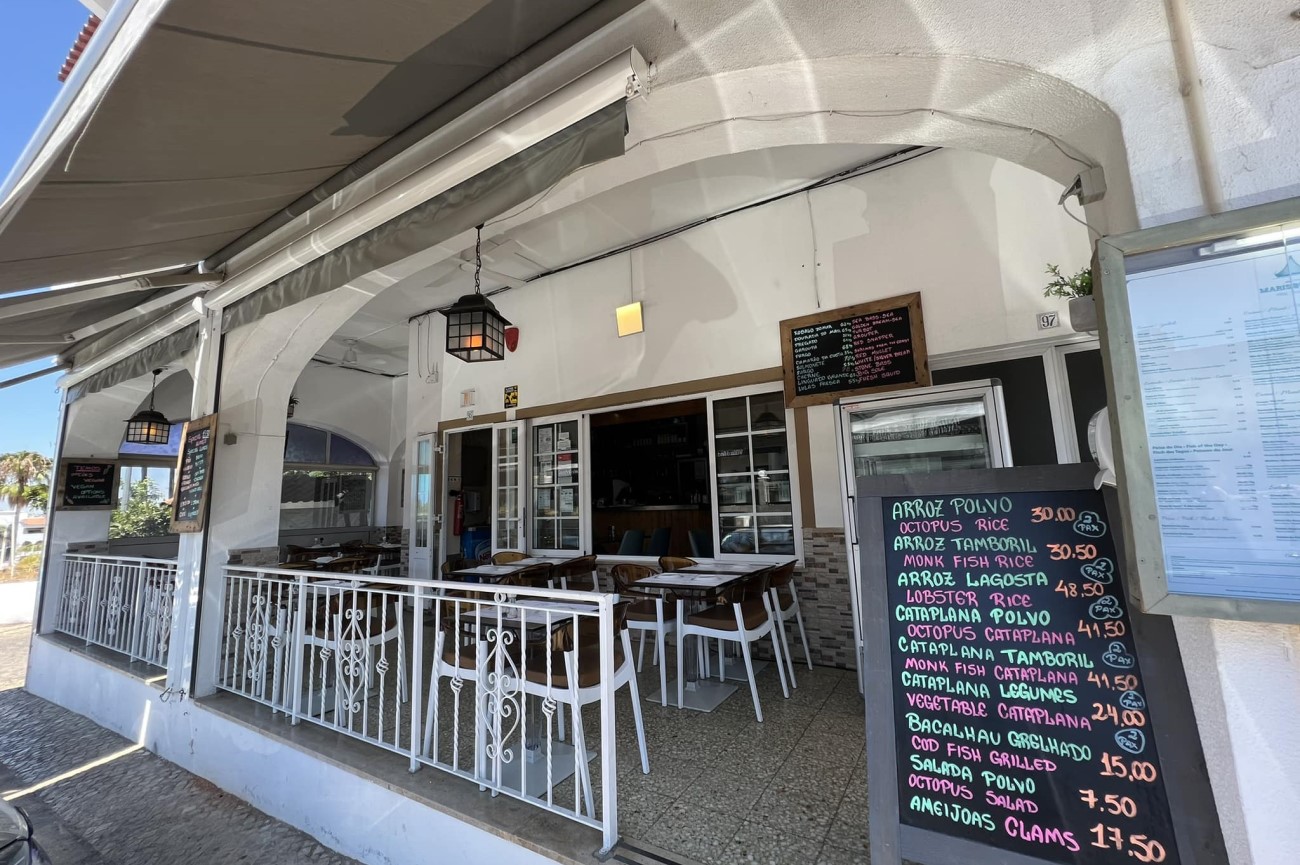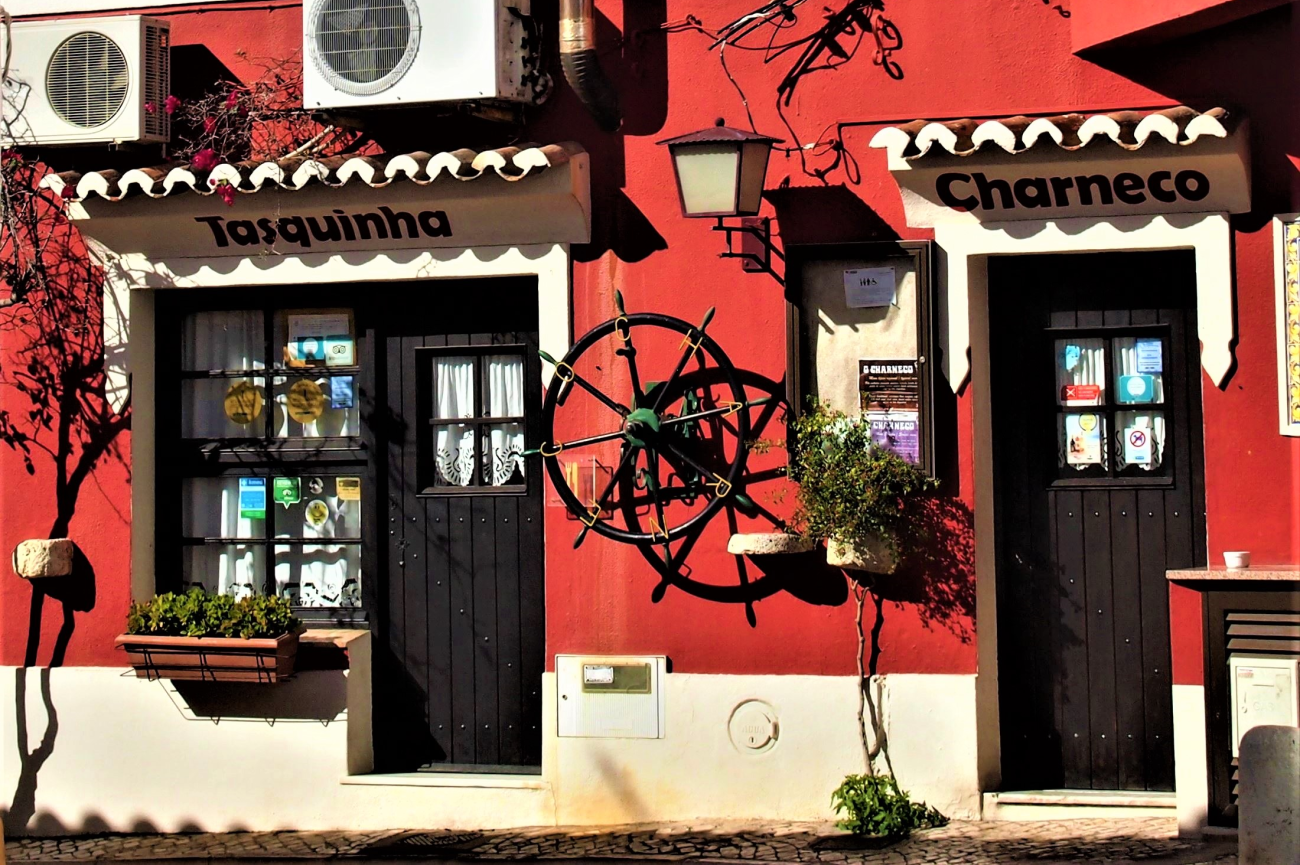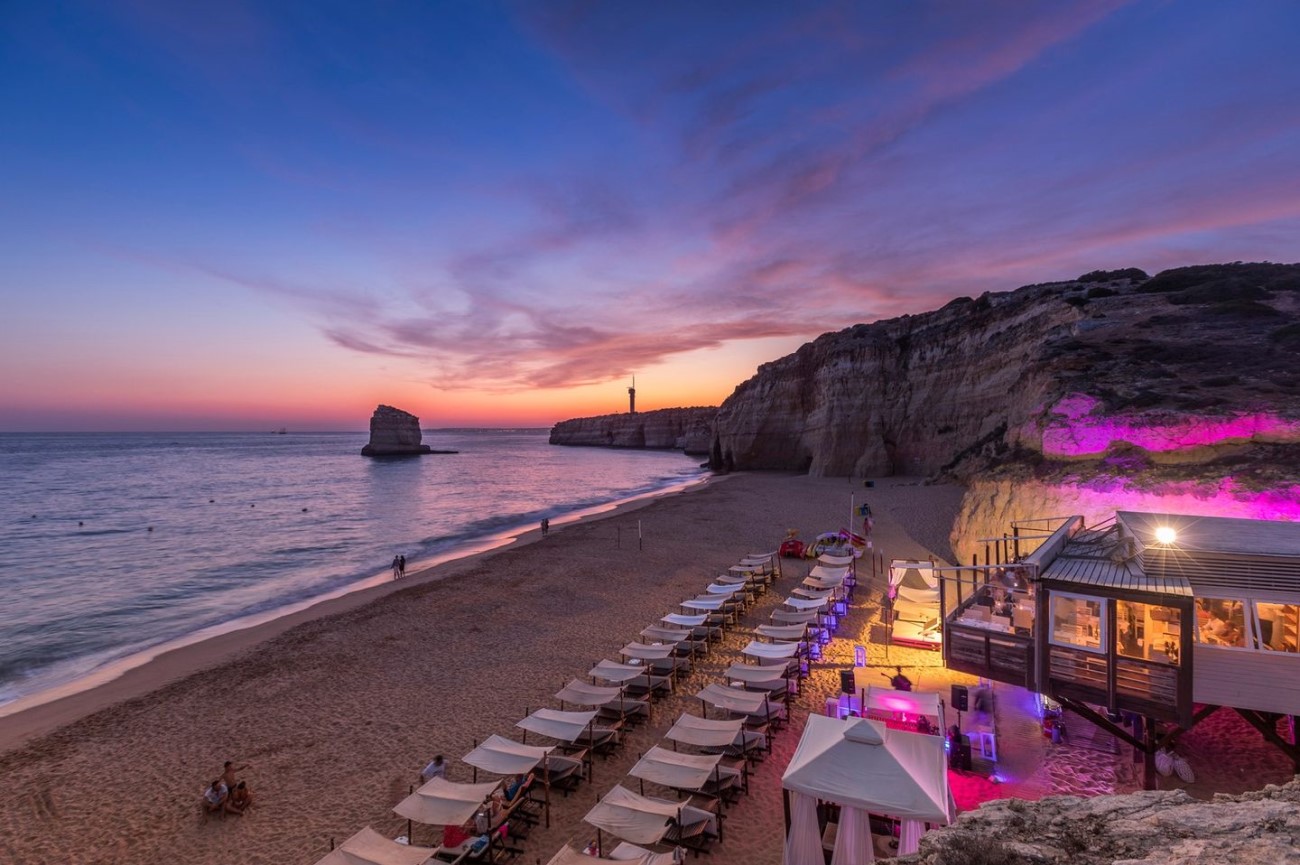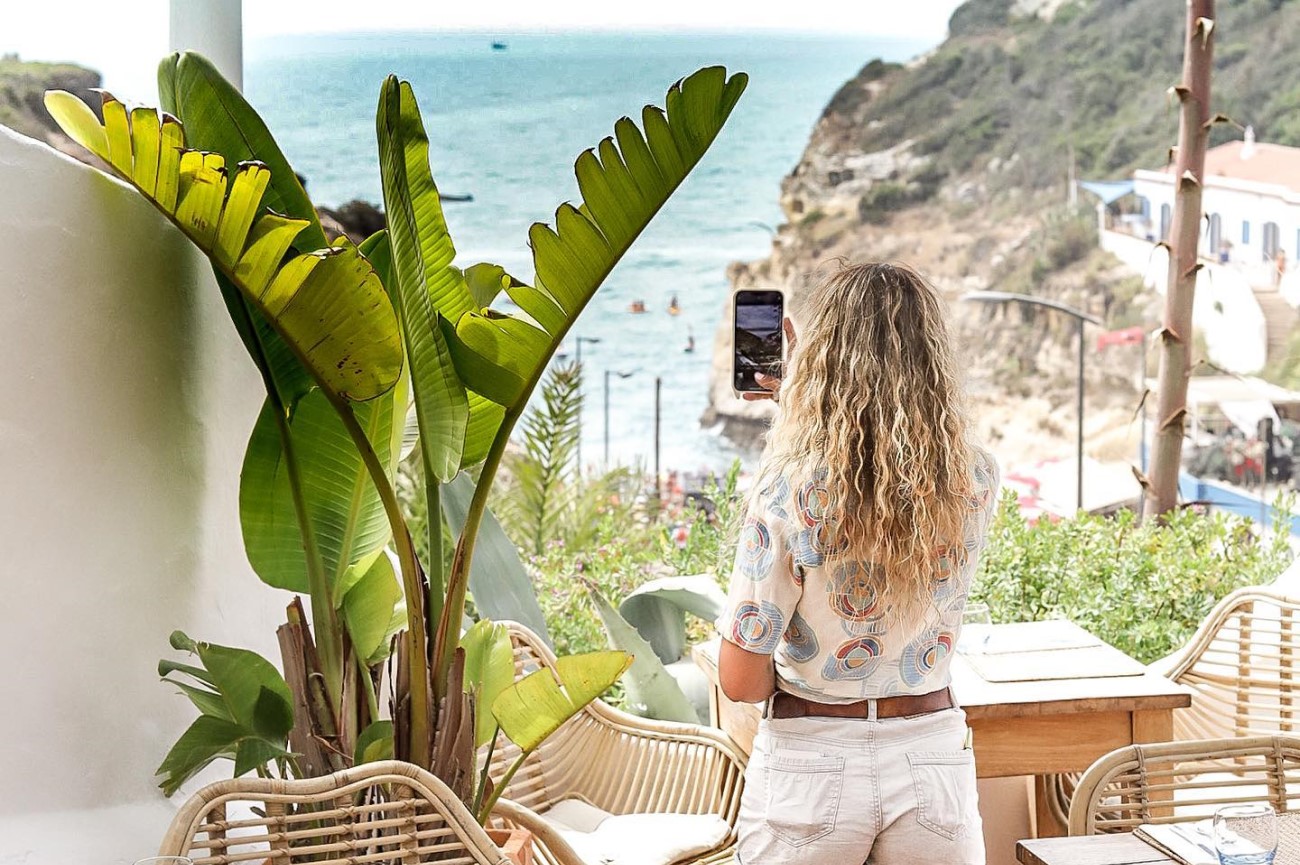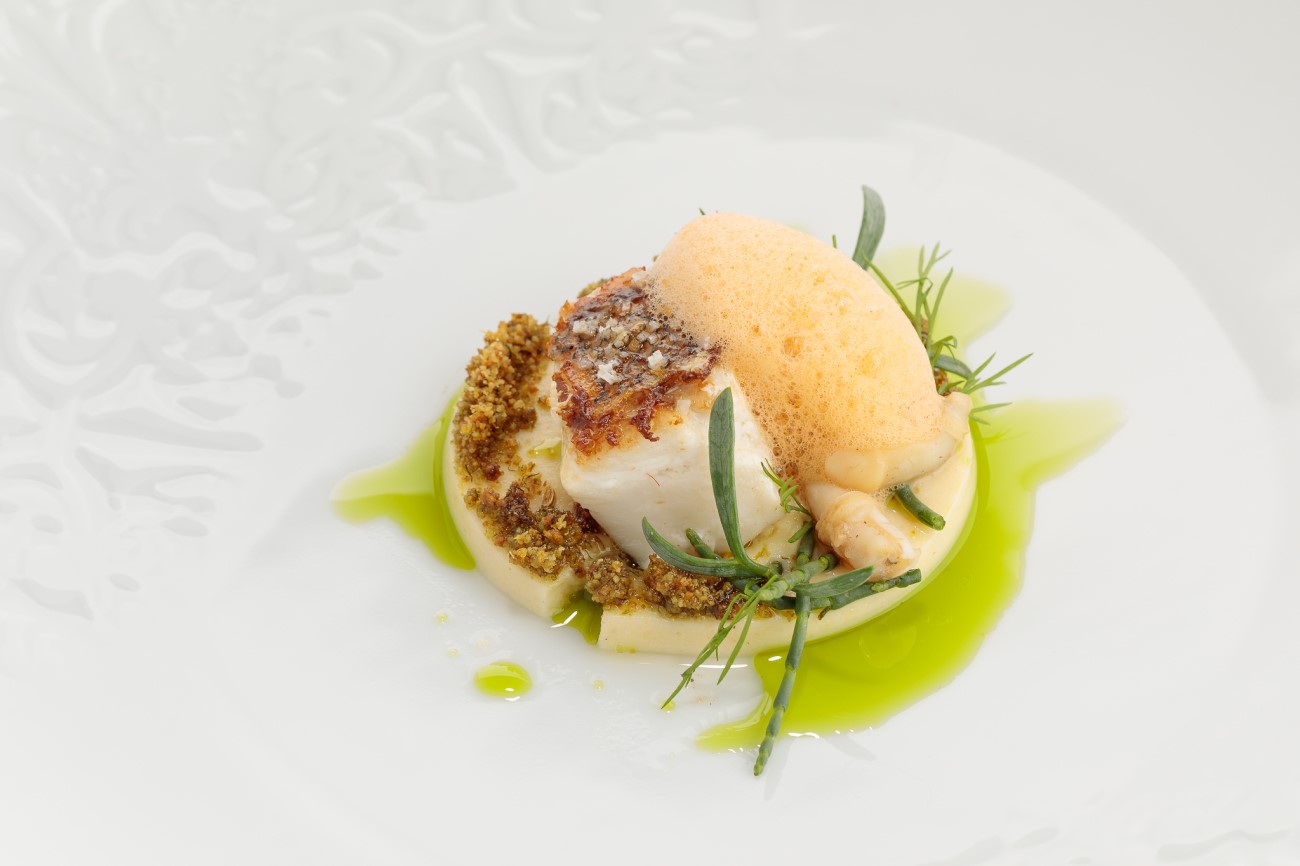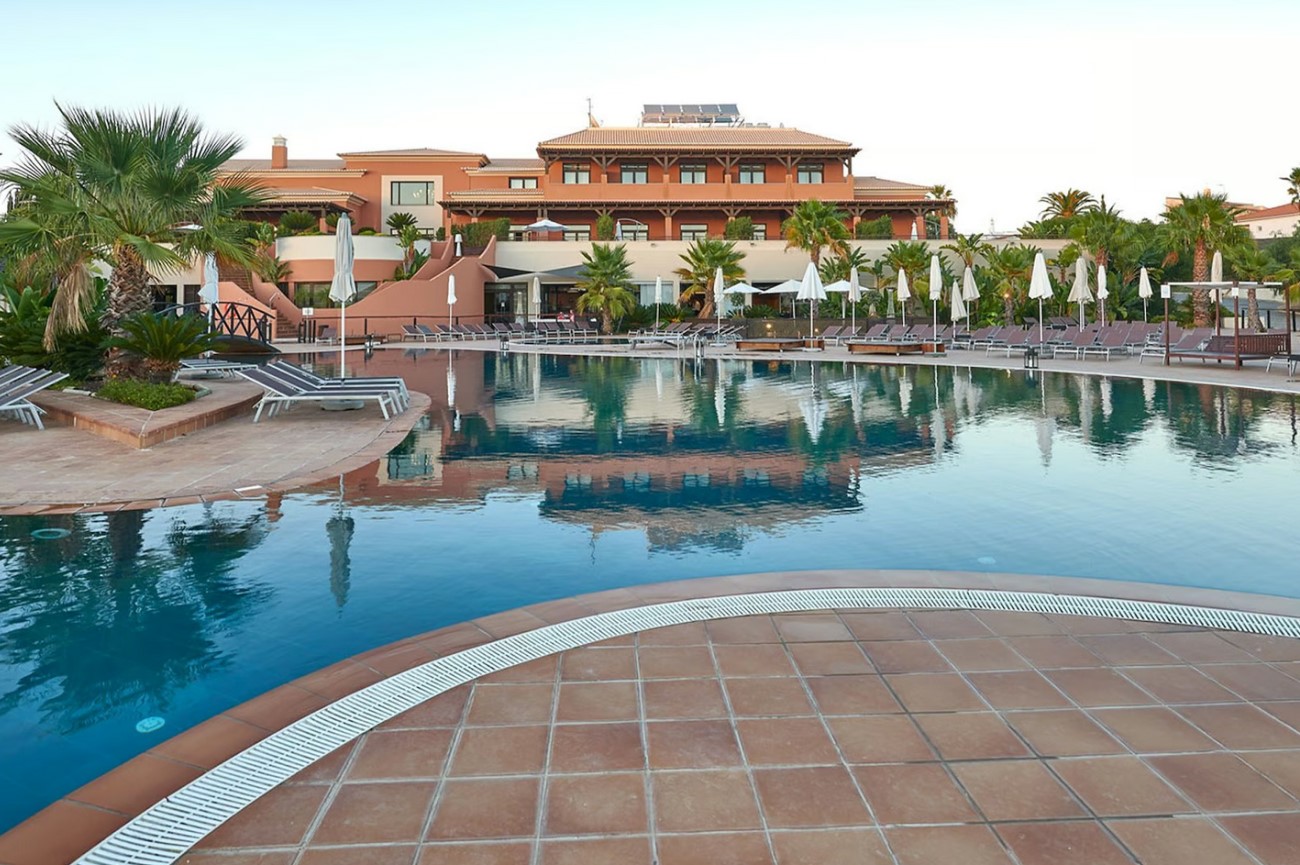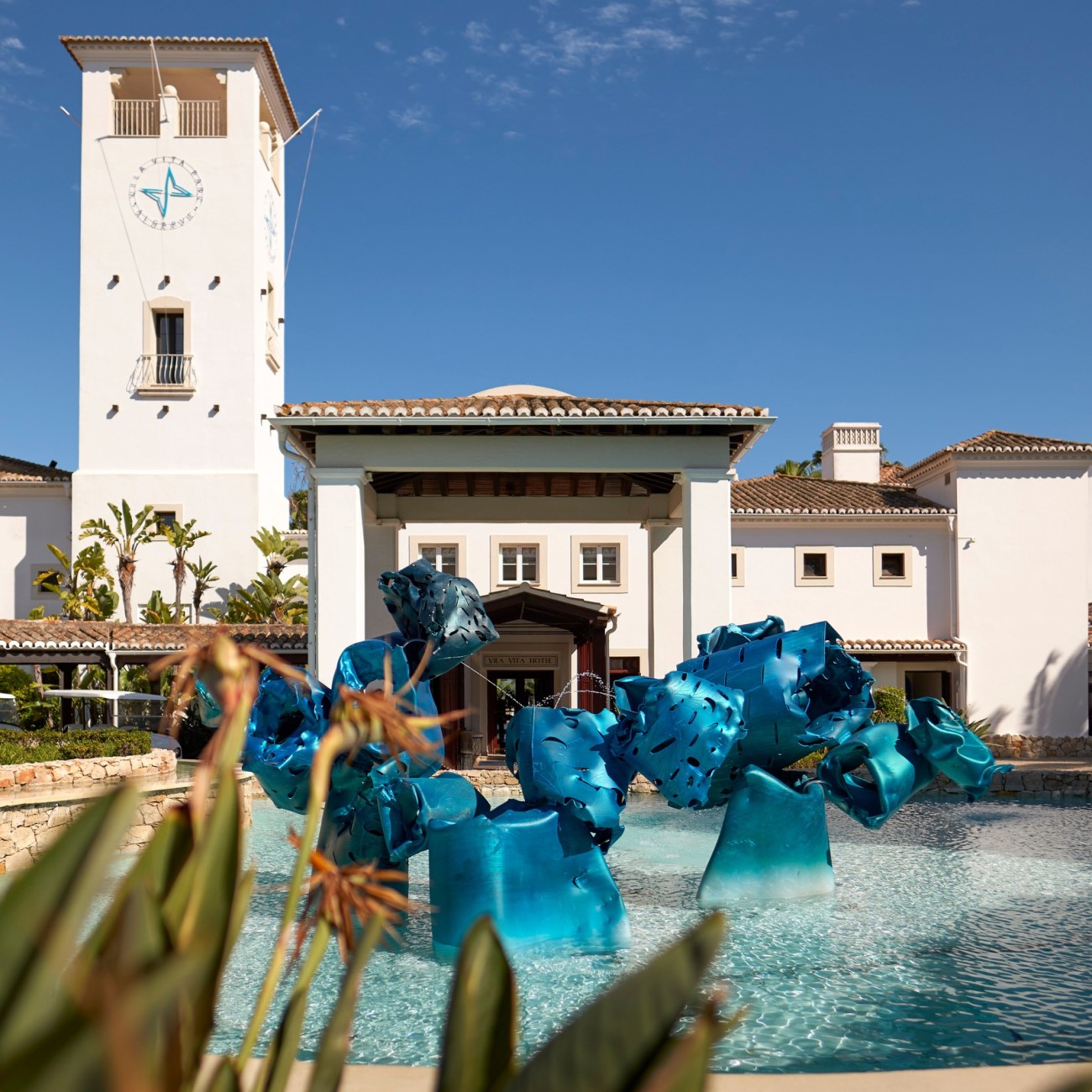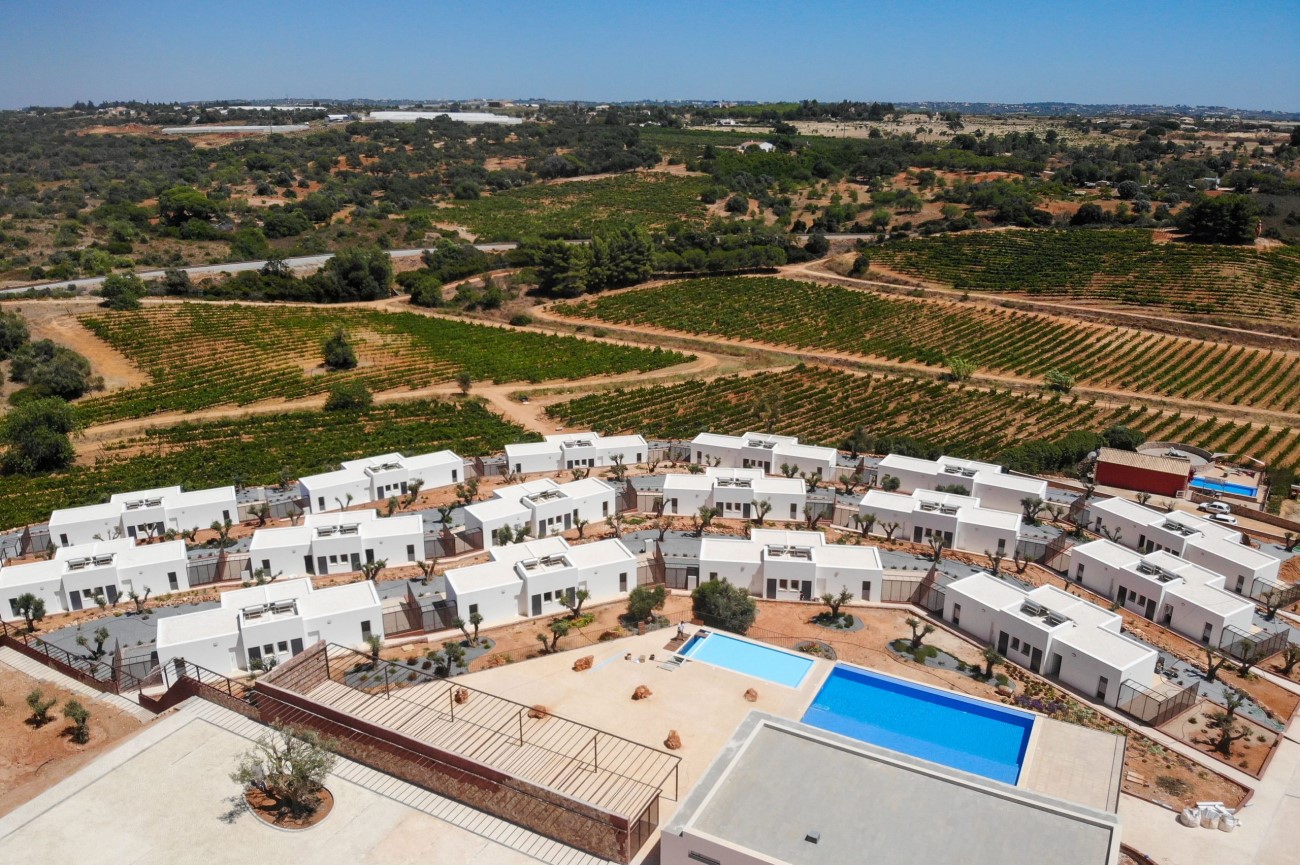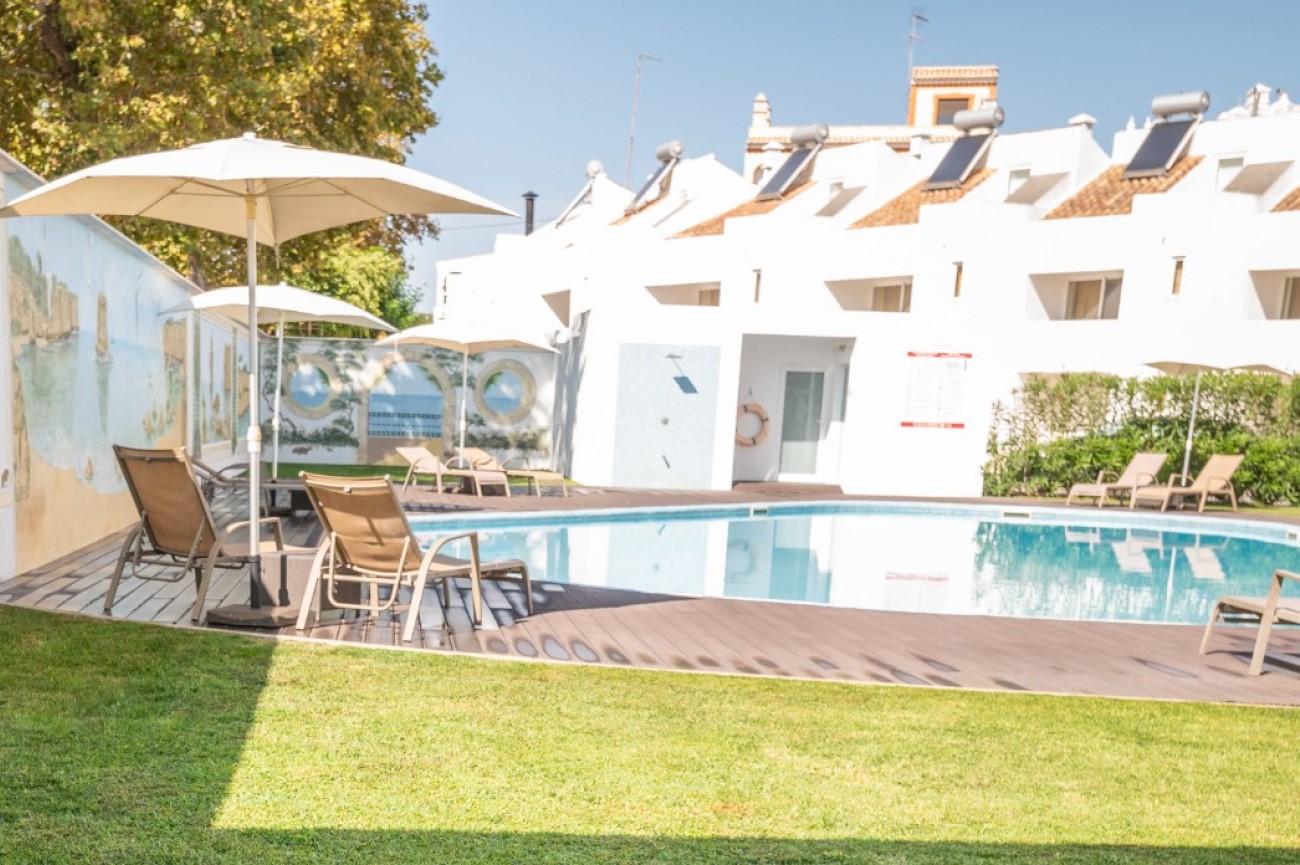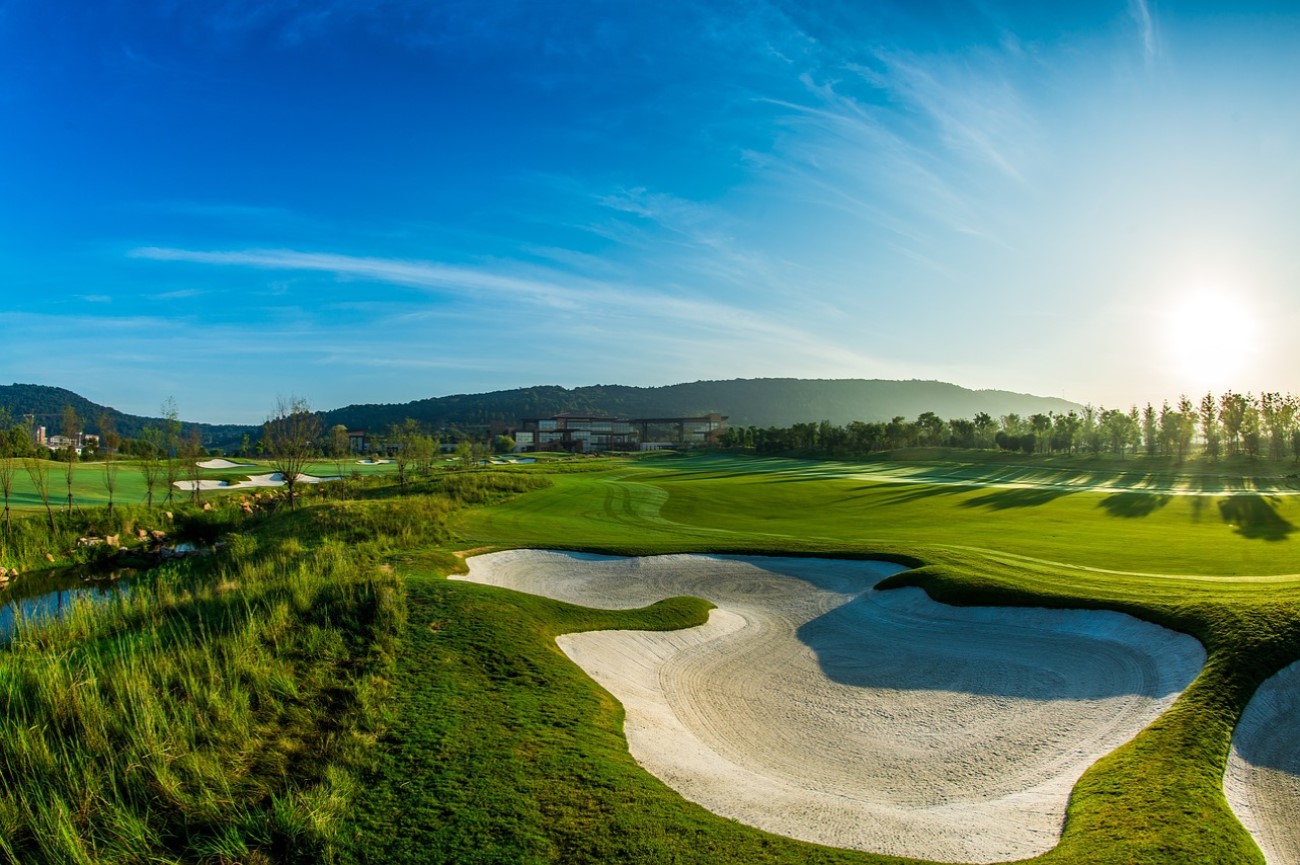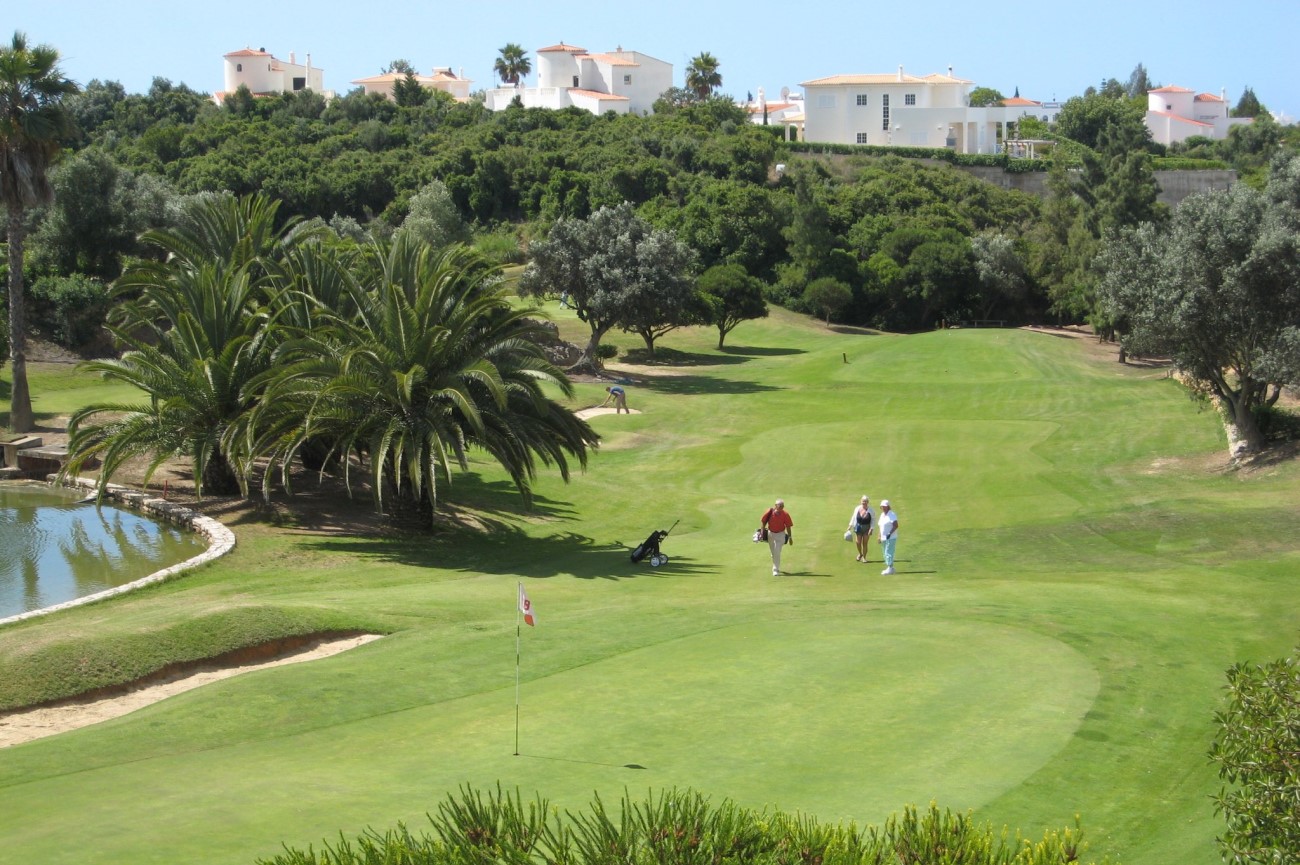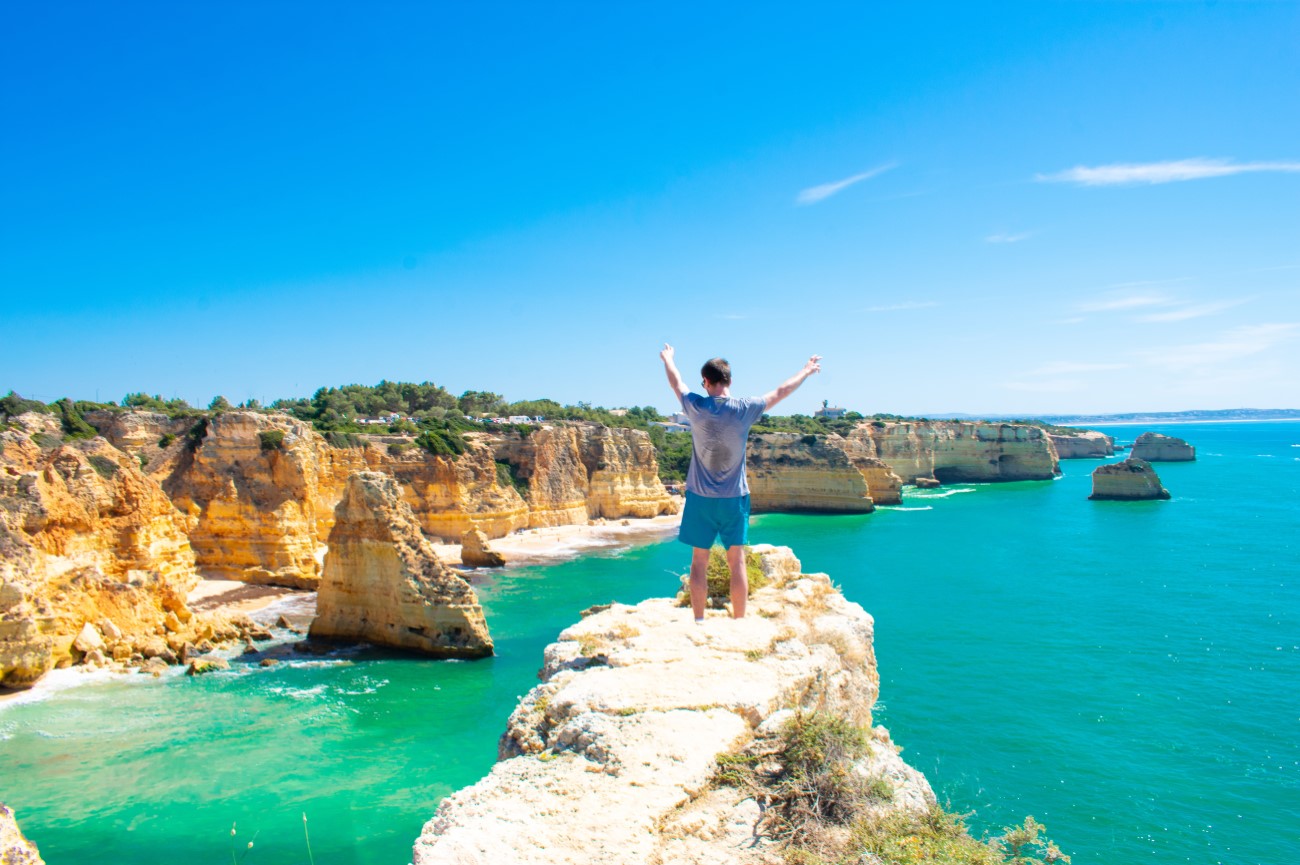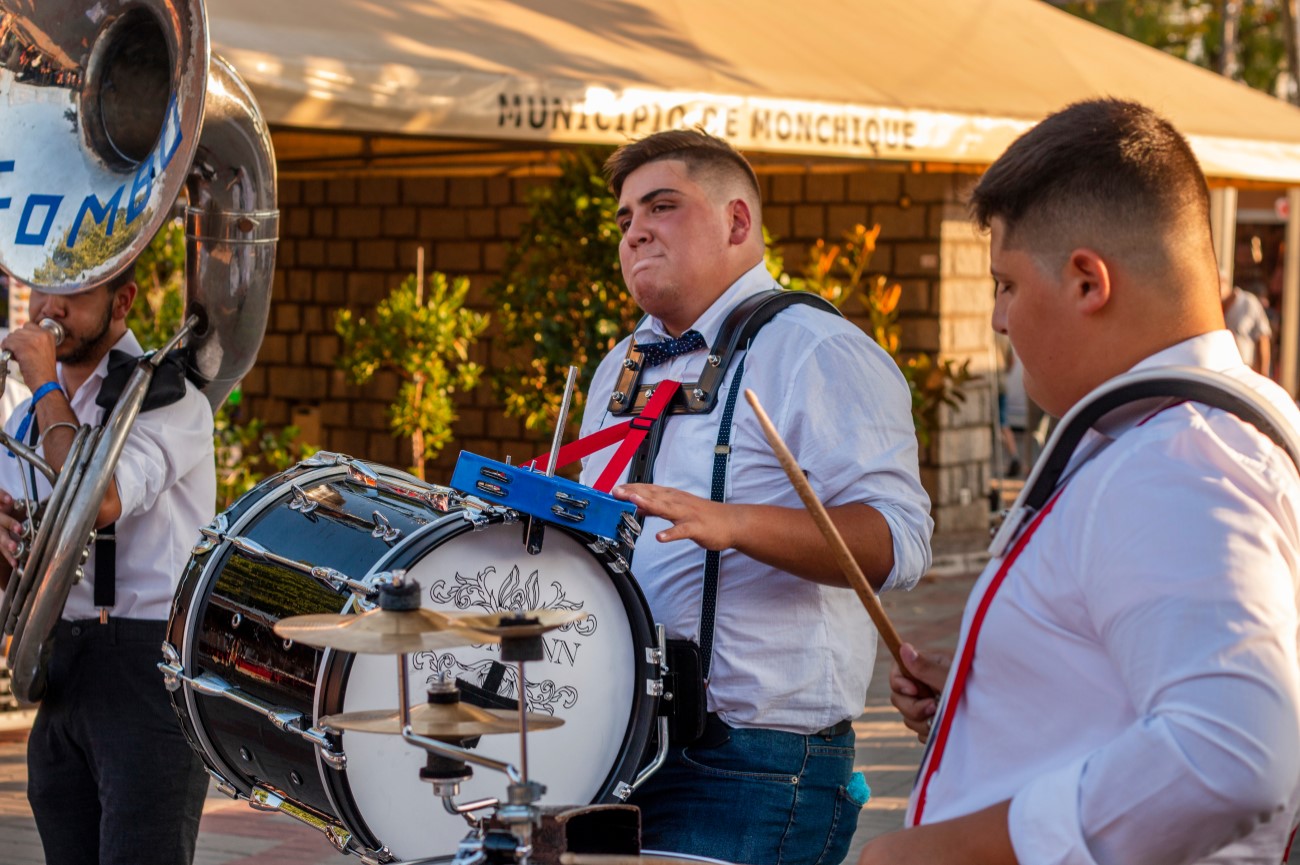Things to do in Lagoa, 2-day Itinerary
Lagoa is a town and municipality in the Algarve known for its beautiful coastline. Its pristine beaches are among the best in the world, and its sea caves attract hundreds of visitors to the region every year.
The area has been occupied since the Neolithic Age, according to archaeological vestiges like the menhir established near the Convent of João José, that dates back to 5000-4000 BC. There are four towns worth visiting in Lagoa: Porches, Carvoeiro, Benagil and Ferragudo.
Over time, the sea erosion has created unique rock formations around Lagoa, beneath which you can find secluded beaches, tunnels and grottoes. The most interesting formations are the Algar Seco and the Benagil cave.
Join us as we explore the best things to do in Lagoa, from cliff-side villages to beaches and historical monuments.
Day 1

Morning: Porches, Forte de Nossa Senhora da Rocha
Begin your tour of Lagoa in Porches, on the east coast. This small town is known for its wine and ceramic production. Before hitting the town, stop by the Forte de Nossa Senhora da Rocha, a white fortress perched on a cliff overlooking the ocean. Inside the fort, there is a small chapel from the 15th century. Standing outside, you can enjoy the unobstructed view of the ocean, with no buildings or people in sight, a rare place to find in the Algarve.
Porches Pottery
After seeing the chapel, drive up to the centre of Porches to visit the famous ceramic workshops. Around 2,000 people live in the village, and most still make a living as potters. The village has several shops and factories where you can buy handmade tiles and pottery that are typical of the area. The most popular workshop is the Porches Pottery, which was founded by the Irish artist Patrick Swift and the Portuguese artist Lima de Freitas in 1968. Here you can watch artists hand paint pottery, and when you’re done, enjoy a cup of coffee at the workshop’s café, Bar Bacchus.
Olaria Pequena
It’s hard to miss Olaria Pequena, with its bold blue sign contrasting against the white walls of the building. The workshop is much smaller than the Porches Pottery and mainly sells tile panels, which are inspired by local themes like lemons and olives.
Praia de Albandeira
Head back to the coast to visit the Praia de Albandeira, a small beach sheltered by golden cliffs. A narrow path leads you down to the sea, passing through lush fields of Mediterranean scrub and daisies. The clear waters are ideal for snorkelling and diving. And there’s an arch over the water, which offers the perfect backdrop for pictures.
Afternoon: Carvoeiro, Praia da Marinha
Halfway between Praia de Albandeira and the Benagil Cave is the Praia da Marinha, a quiet cove beach with transparent waters and steep orange cliffs. It’s famous for its striking rock formations like the double sea arch nicknamed the ‘M rock’. To get there, you must walk down a steep staircase. If you have mobility issues, you can always stay up and admire the views from the trails along the cliffs.
Praia do Carvalho
Praia do Carvalho is another spectacular beach in Lagoa. Its rugged cliffs and crystal-clear waters, offering visitors a tranquil and intimate coastal experience. It is accessible only through a narrow tunnel in the cliffs, Praia do Carvalho is a serene escape for those seeking natural beauty and seclusion.
Benagil
Continue along the coast towards Praia de Benagil, where you can join a boat trip to the Lagoa caves. The tour takes around one hour and passes through magnificent rock formations, secluded beaches and stunning caves. Among these caves is the Benagil Cave, one of the most beautiful natural sites in the Algarve. The cave has a large hole in the ceiling, allowing the sun to come through and form a spotlight on the tiny beach below it.
Algar Seco
As you approach Carvoeiro, it’s worth stopping by Algar Seco, an area full of spectacular rock formations, grottoes and sea caves. The view from the top is pretty impressive, but it’s worth venturing further down to the rocks, where you’ll spot windows framing the sea and tunnels leading to stunning natural pools. There’s even a restaurant hiding amongst the rocks, where you can sit down and enjoy a cocktail.
Fort of Nossa Senhora da Encarnação
Follow the wooden boardwalk towards the Fort of Nossa Senhora da Encarnação. The fort is set right above the main beach of Carvoeiro, and it’s the perfect place to capture the town and its typical whitewashed buildings.
Carvoeiro
The seaside town of Carvoeiro is known for its small beach, Praia do Carvoeiro. The beach is a quiet swimming spot and provides a series of water activities like scuba diving and boat trips to the caves.
Day 1 - Lagoa Tour Map
Day 2

Morning: Lagoa, Mercado Municipal de Lagoa
Start your second day at Lagoa’s local market, looking at the food stalls selling fresh fish and other regional delicacies. It is one of the oldest markets in the Algarve, with construction beginning in 1894. The bell on top of the building was once used to signal the arrival of fresh fish.
Convento de São José
Walk to the Convento de São José, an 18th-century convent that has been converted into a cultural centre. Visit the exhibits and the garden, where you’ll spot a large menhir dating back to the 5-4th Century BC. According to the plate standing next to it, the menhir was found in Porches and was only placed here in 1975.
Igreja de Nossa Senhora da Luz
A few steps from the convent is the Igreja de Nossa Senhora da Luz. The original church was erected in the early 16th century, but was later rebuilt following the earthquake of 1755. The only thing that remains from that old era is the Manueline gateway in the bell tower. Everything else was introduced later, like the Baroque façade with Neoclassic motifs.
Lady in Red
Slowly make your way to Lady in Red, a contemporary art gallery set inside an industrial warehouse of a local winery. You’ll find it on the EN125 road, which leads to Porches. You can buy the pieces on display or simply admire the artwork and enjoy a glass of wine at the on-site bar. The gallery is closed on Tuesday, Wednesday and Sunday.
Afternoon: Estômbar & Ferragudo,
Wine tasting at Quinta dos Vales
Continue your wine-tasting session at Quinta dos Vales, a large wine estate in the town of Estômbar. You can tour the grounds of the estate, which is dotted with sculptures, and enjoy a wine tasting at the end.
Sítio das Fontes
The next stop is Sítio das Fontes, a large nature park set along the
margins of the Arade River and one of the Algarve’s hidden gems. Park
the car near the entrance and set off to explore the area, following the
walking trail leading to the river. On the edge of it is an old mill
house and an amphitheatre, which is still used for events.
Throughout
the park, there are several pools and waterways, the perfect swimming
spot for those who want to be surrounded by nature. If you don’t fancy
walking, you can simply sit in the picnic area admiring this
breathtaking scenario.
Ferragudo
End the day in Ferragudo, a former fishing village right across from Portimão. Stop by the Fort of São João do Arade, a 17th-century fort sitting between two beaches in Ferragudo, Praia da Angrinha and Praia Grande, which is the best place to capture the fort as unfortunately it is not open to the public.
Then head over to the Lighthouse of Ponta do Altar in time for the sunset. As the orange sky begins to fade, the lights will turn on, forming a beautiful trail along the coast of Portimão on the other end.
Day 2 - Lagoa Tour Map
Day trips from Lagoa
- Percurso dos Sete Vales Suspensos: One of the most popular hikes in the Algarve, this 12km trail passes through some of Lagoa’s most iconic beaches. It connects Praia do Vale de Centeanes to Praia da Marinha. During the walk, you’ll take in the ocean views and the striking rock formations dotted along the coast.
- Portimão: Across the river from Ferragudo is Portimão, a vibrant city renowned for its beaches and nightlife. The city was once an important hub for canning fish, but these days tourism is the main industry. Head to Praia da Rocha for a swim or visit the Portimão Museum to learn more about the city’s history.
- Lagos: About a 30-minute drive west is the picturesque town of Lagos. It is home to paradisiacal beaches like Praia do Camilo and offers the perfect jumping off point to visit the surrounding sea caves.
- Silves: A few miles north of Lagoa is the historic town of Silves. It is packed with monuments, from an old Roman bridge to a medieval castle and Gothic Cathedral, which reflect the different civilisations that have lived here in the past.
Top things to do with kids in Lagoa
Lagoa is full of attractions for kids and families. There’s no shortage of beaches here, stretching from Porches to Carvoeiro. You can relax by the sand, follow the walking trails or hop on a boat and explore the surrounding sea caves. Praia Grande in Ferragudo is a popular spot for families, thanks to its calm waters.
In the summer, you can visit
Slide & Splash, a large waterpark featuring a mix of slides and
pools, including a wave pool. Alternatively, take a small detour to Guia
to see dolphins and seals at the Zoomarine Algarve.
Kids will also enjoy exploring Sand City, a large park on the outskirts of Lagoa filled with more than 100 sand sculptures. Opening hours vary with the season and weather conditions.
Where to eat in Lagoa
Like most coastal towns in the Algarve, the cuisine in Lagoa revolves around fresh seafood and fish. Popular ingredients include sardines, mackerel and clams. These last ones are often used in the seafood stew known as cataplana. Below are some of the best places to eat in Lagoa:
- Leão de Porches: Occupying a 17th-century farmhouse in Porches, this restaurant offers a relaxed outdoor patio adorned with colourful ceramic plates. You can choose between the five-course tasting menu or à la carte. Dishes include anything from braised tuna and octopus to lamb and duck.
- A Marisqueira: Set near Algar Seco in Carvoeiro, A Marisqueira specialises in grilled dishes. Highlights include the piri-piri chicken, grilled fish and squid skewers.
- O Charneco: Hidden behind the church of São Tiago in Estômbar, O Charneco sticks out with its bright red walls and black doors. Inside, there is a rustic decoration with terracotta floors and wooden tables. The tasting menu costs around €35 and includes a fish dish, a meat dish and a mix of starters and regional desserts.
- Rei das Praias: This beachfront restaurant is located near Ferragudo above the Praia dos Caneiros. It offers a wide range of fresh seafood and Portuguese cuisine, plus an incredible sea view.
- O Pescador Benagil: This family-run restaurant is only a few steps from the Benagil beach, making it a great pitstop for those visiting the nearby caves. The menu includes a range of freshly caught fish and delicious homemade desserts.
- Bon Bon: An elegant Michelin-star restaurant run by Chef José Lopes. The food is a combination of old regional flavors and modern cuisine, with ingredients from the coast and the mountains. There are two tasting menus for lunch and dinner, including a vegetarian option.
Where to stay in Lagoa
- Monte Santo Resort (5 stars): Surrounded by small lakes and gardens, this hotel is an authentic oasis in Carvoeiro. Inside you'll find a range of facilities, including a gym, sports court, bike rental, six outdoor swimming pools and a spa with an indoor pool.
- Vila Vita Parc Resort & Spa (5 stars): This luxurious resort is only a few minutes from Forte Nossa Senhora da Rocha. It offers top-class amenities, including the two-Michelin-star restaurant Ocean, a spa, seven pools and direct access to the Tremoços beach. Guests can choose between suites, villas and apartments.
- Quinta dos Vales (4 stars): More than a wine estate, Quinta dos Vales also doubles as an accommodation. Between the vineyards and the olive grooves, you’ll find a mix of apartments and villas that can take up to six people, some of which come with a private pool.
- Lagoa Hotel (4 stars): In the heart of Lagoa is this affordable four-star hotel. It features 44 apartments, ranging from studios to suites. Most offer a kitchenette, allowing you to prepare your own meals. Guests also have access to an outdoor pool and a terrace.
Fancy a vacation rental instead of a hotel? Here is our selection of the best vacation rentals in Carvoeiro
Best golf courses near Lagoa
If you enjoy golf, the best golf courses in Lagoa can be found at the Pestana Golf Resorts and Vale de Milho, both in Carvoeiro. But there are a couple of others worth checking nearby, like the Penina Golf Course (Portimão), Algarve’s first golf course opened in 1966, Silves Golf Course (Silves), a slightly challenging route with a medium flat to hilly terrain, and the Morgado Golf Course (Portimão), surrounded by the Monchique mountains.
Best time to visit Lagoa
Lagoa offers a warm Mediterranean climate with mild winters and hot summers. If you’re coming for the beaches, the best time to visit Lagoa is between June and September. In addition to the good weather, you will have the chance to catch some local festivals, like the Fatacil craft fair. If you prefer a quieter atmosphere with fewer crowds, then you should come in the shoulder season between April and May or October to November.
Lagoa Festivals
- FATACIL: Every year in August, Lagoa hosts this fair dedicated to handicraft, tourism, agriculture, commerce and industry. The 10-day event gathers some of the major producers in the Algarve and is a great opportunity to discover more about the region. There’s plenty of live music, traditional food and drinks, and a variety of exhibitors showcasing local products and crafts.
- Festa de Nossa Senhora da Luz: This religious festival is held in the nearby village of Luz in September. It celebrates the patron saint of the village, and includes processions, live music, and a fireworks display.


